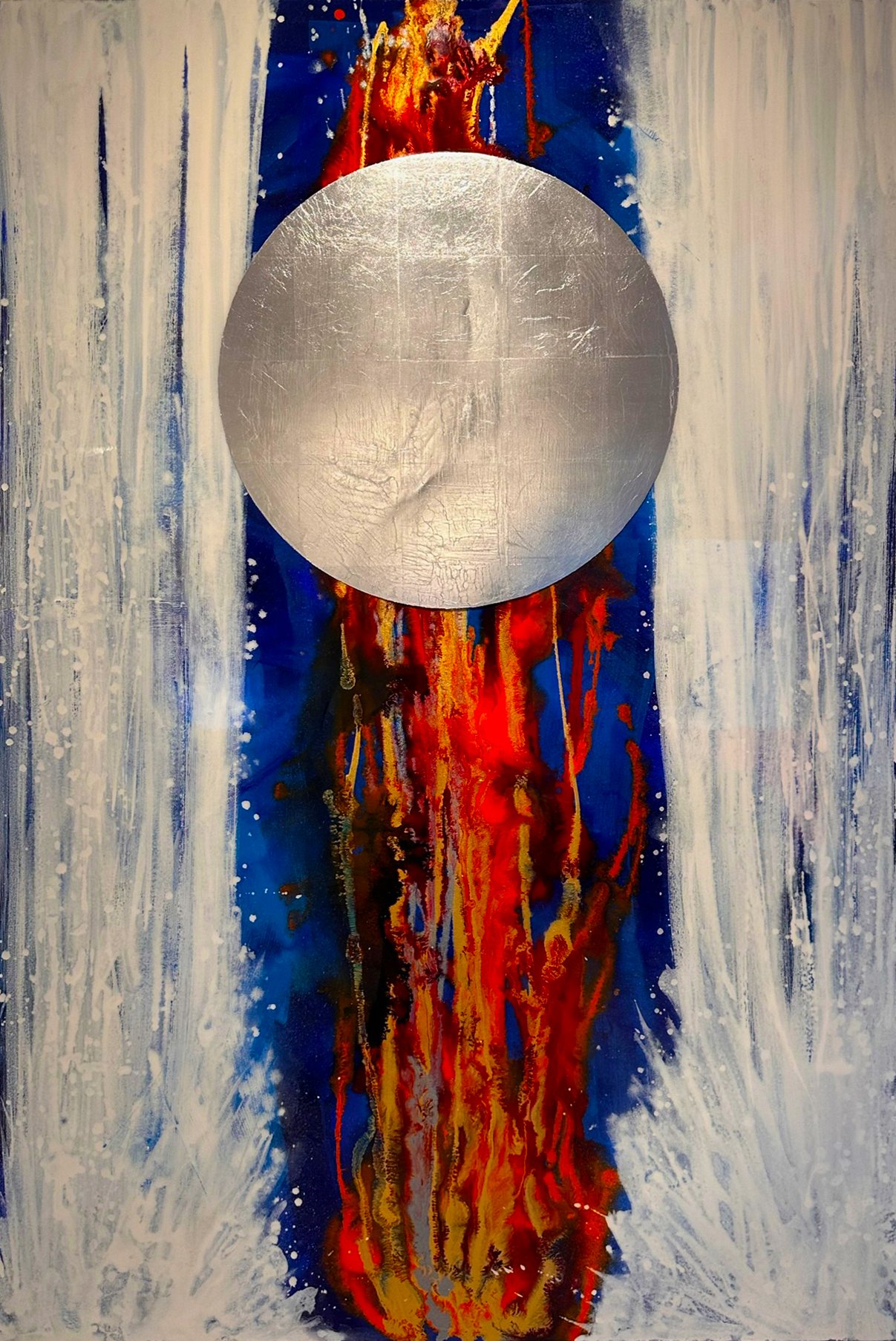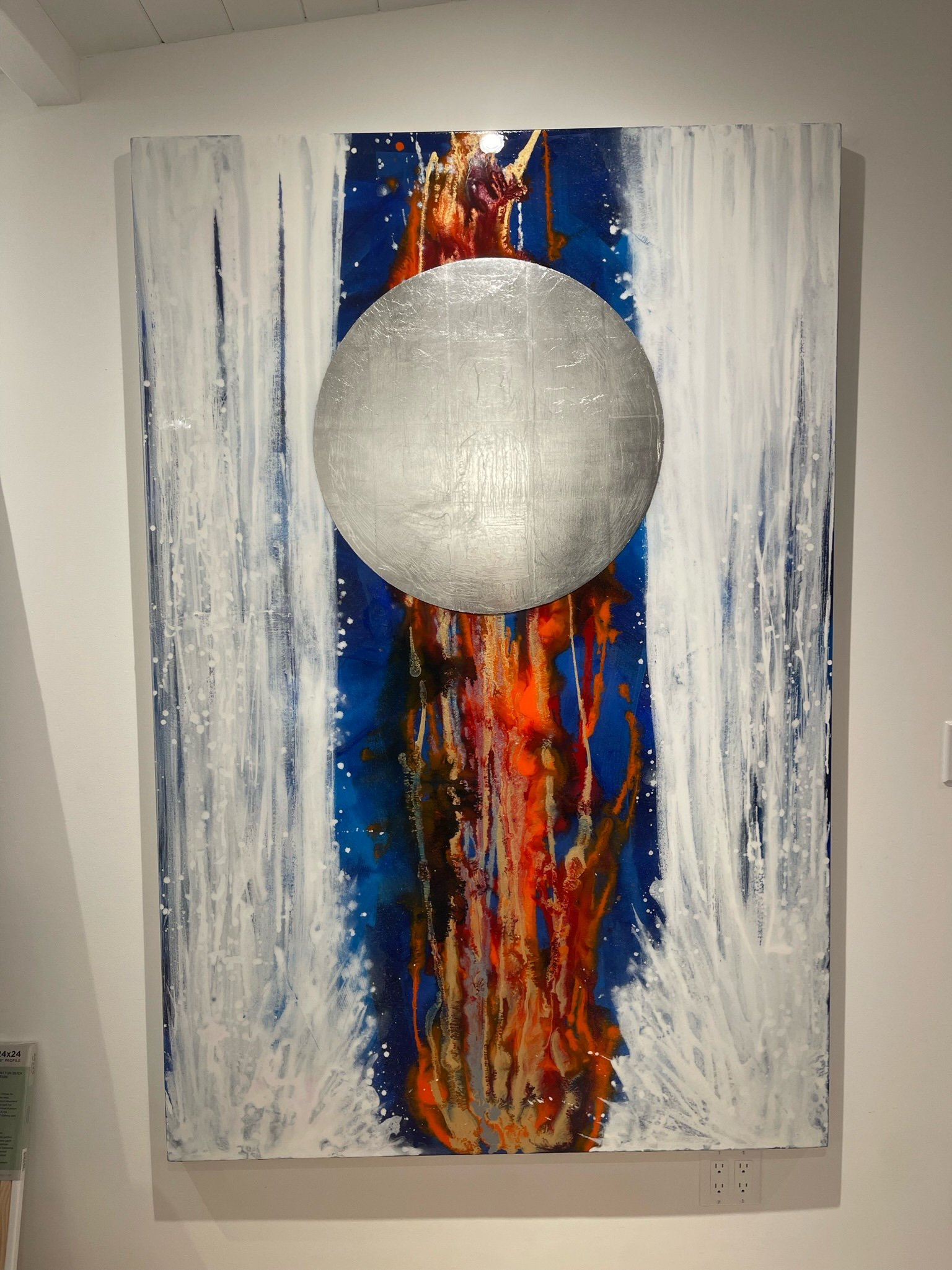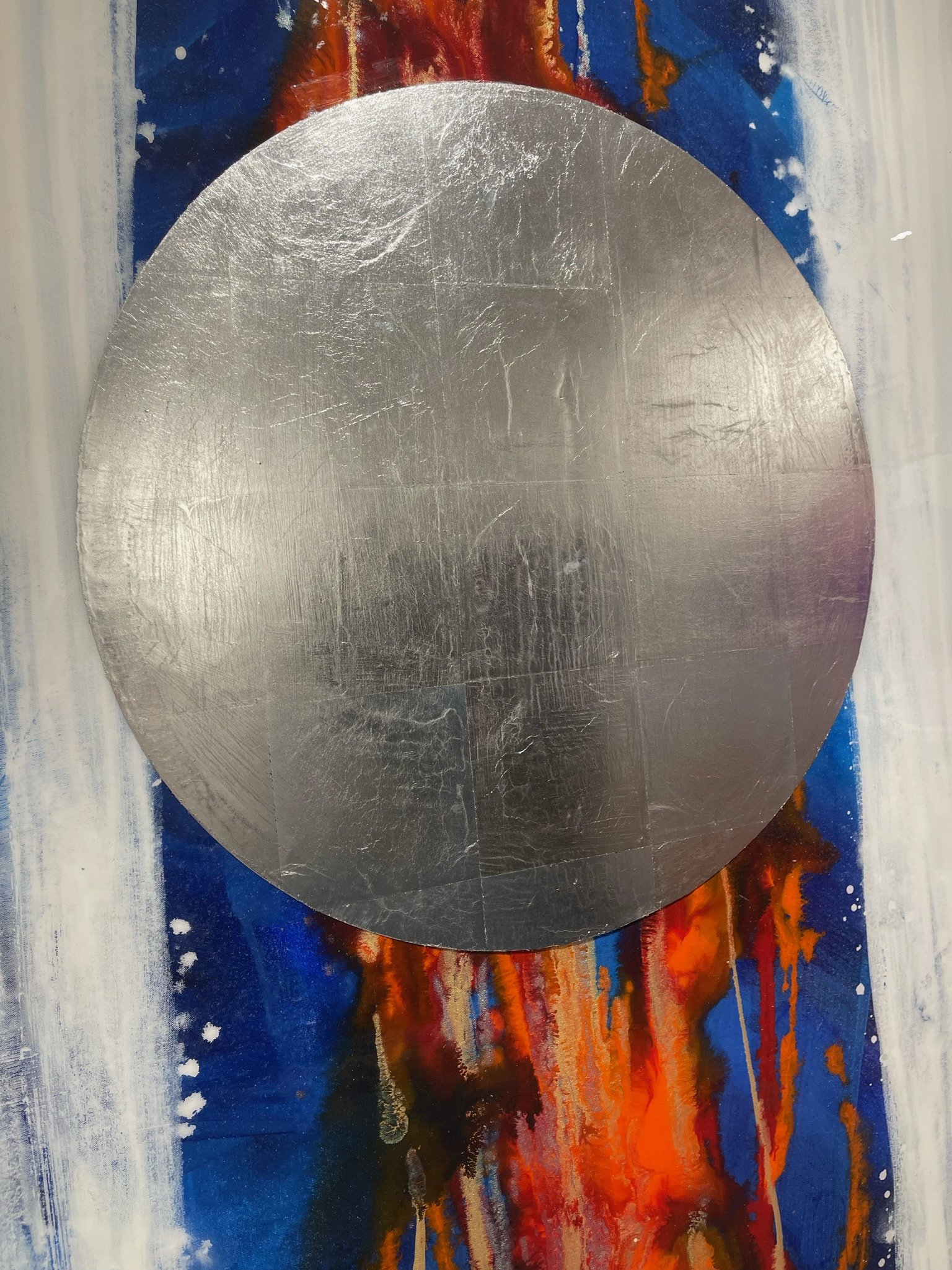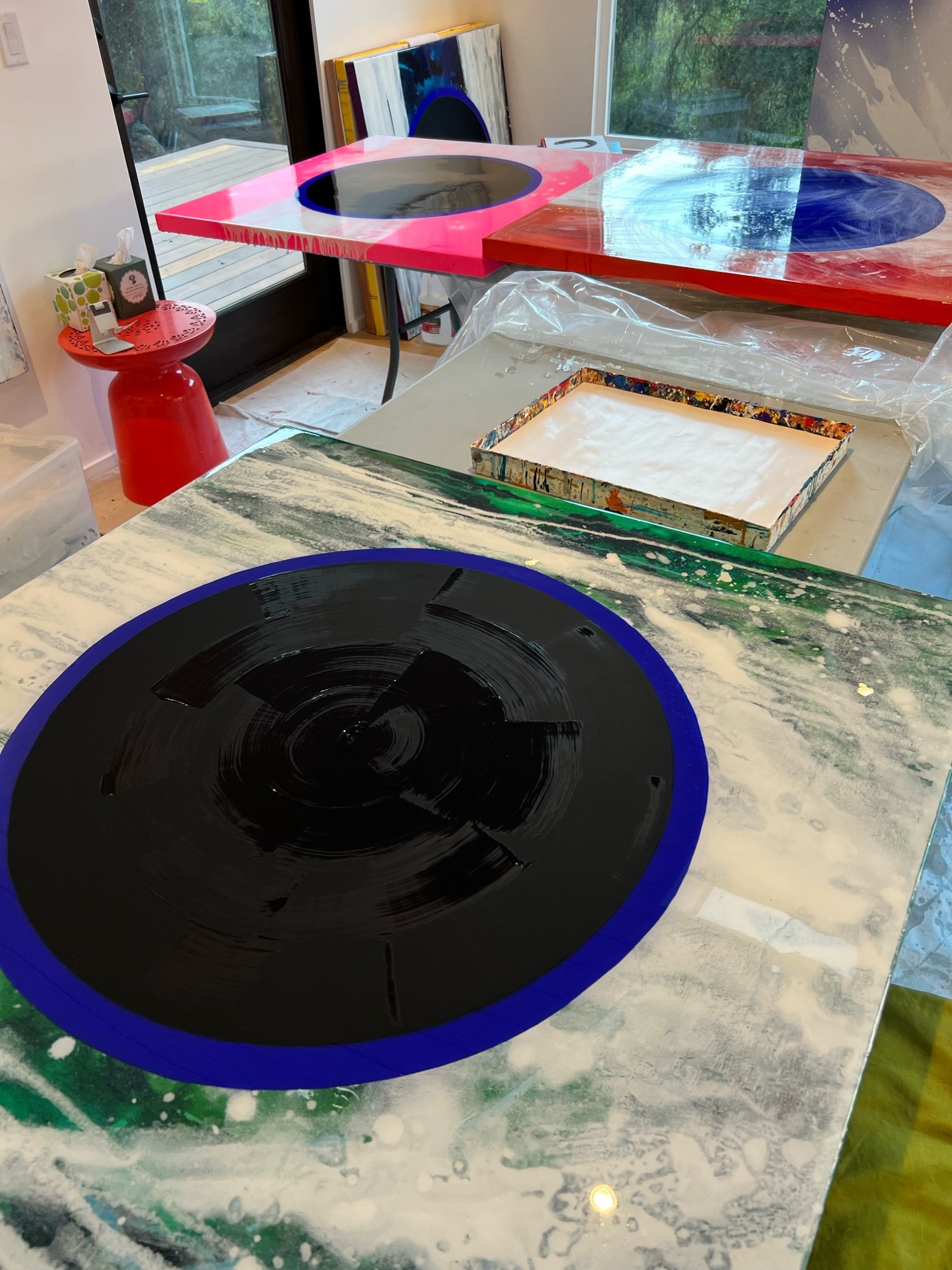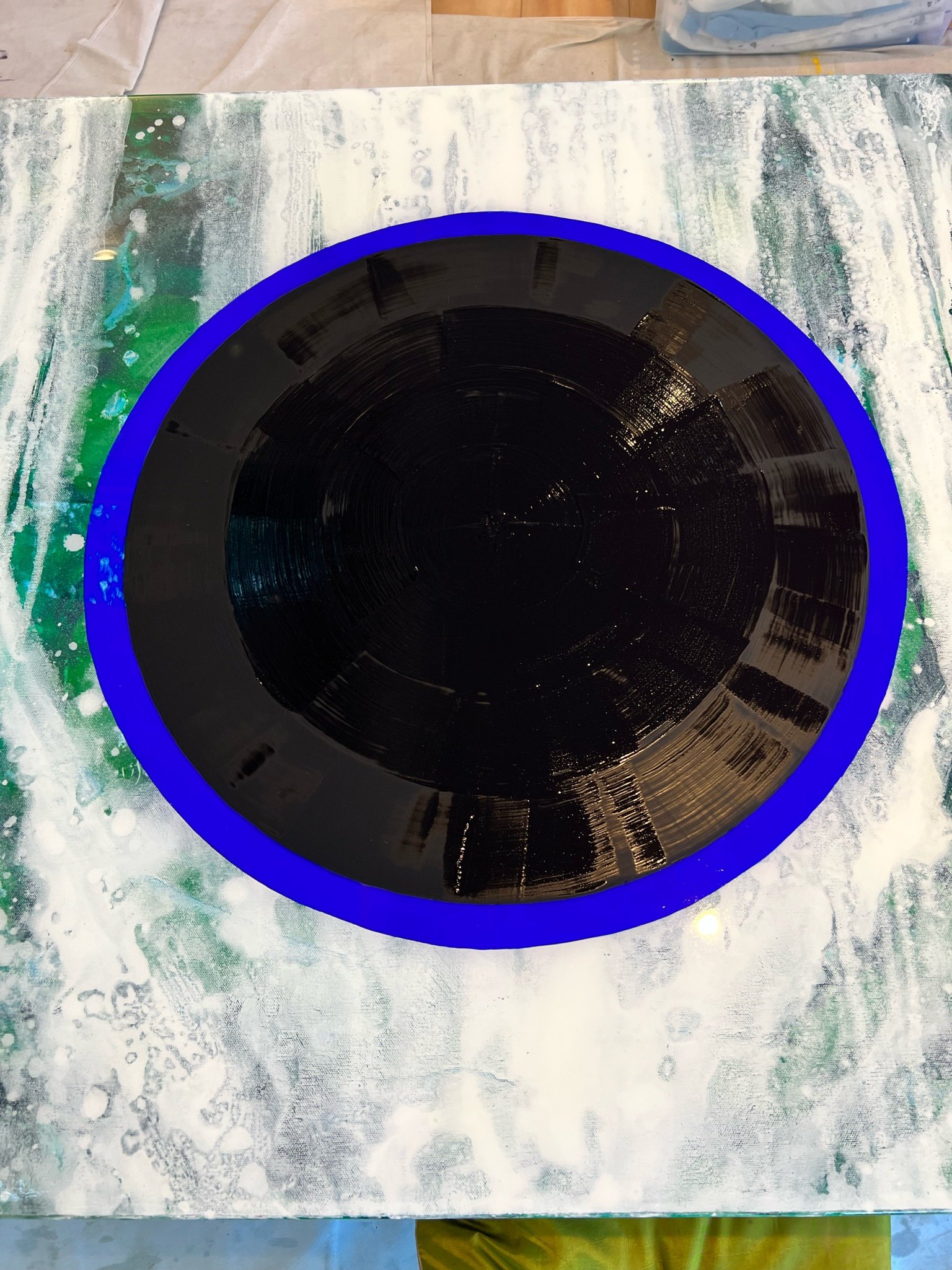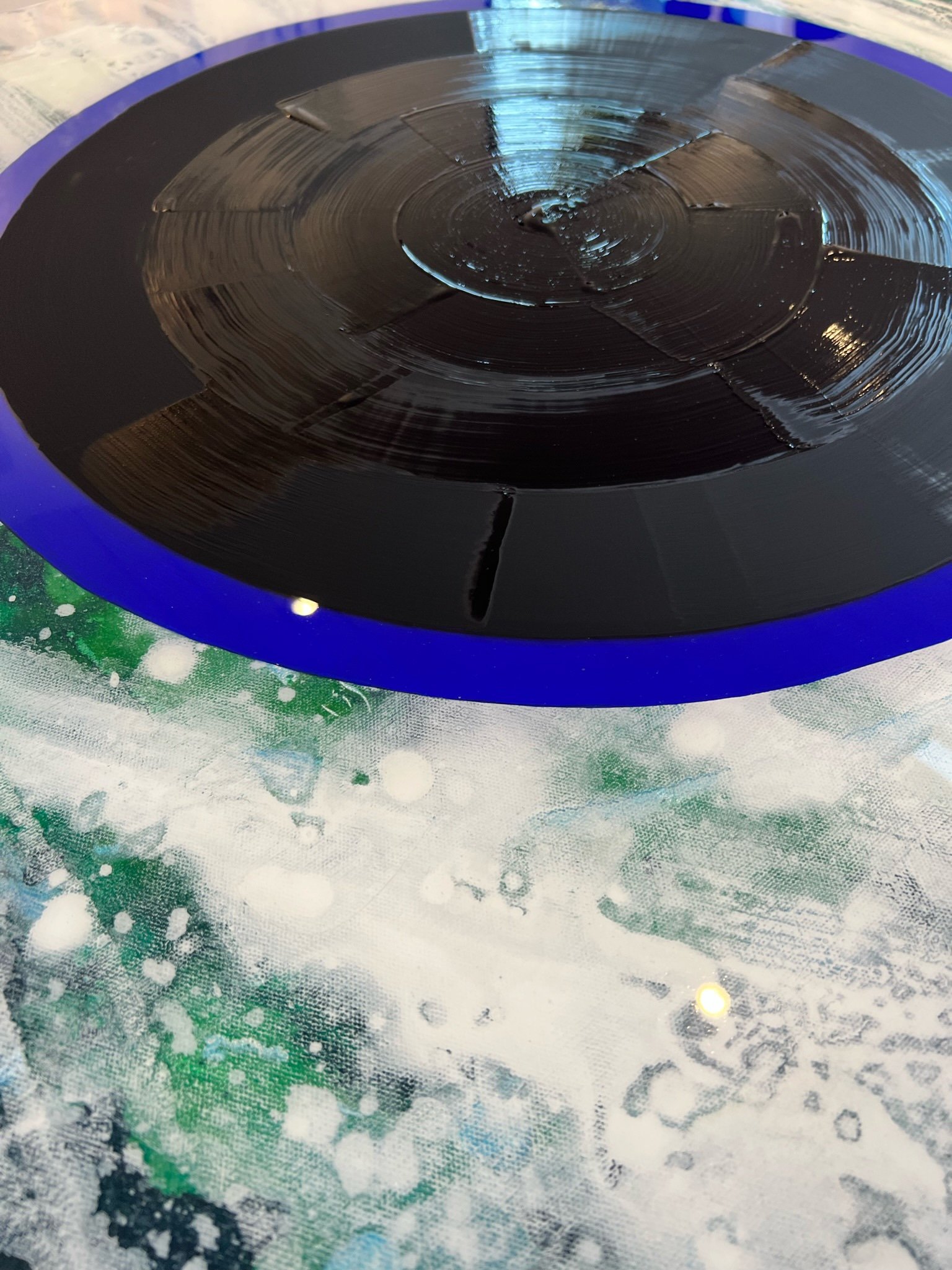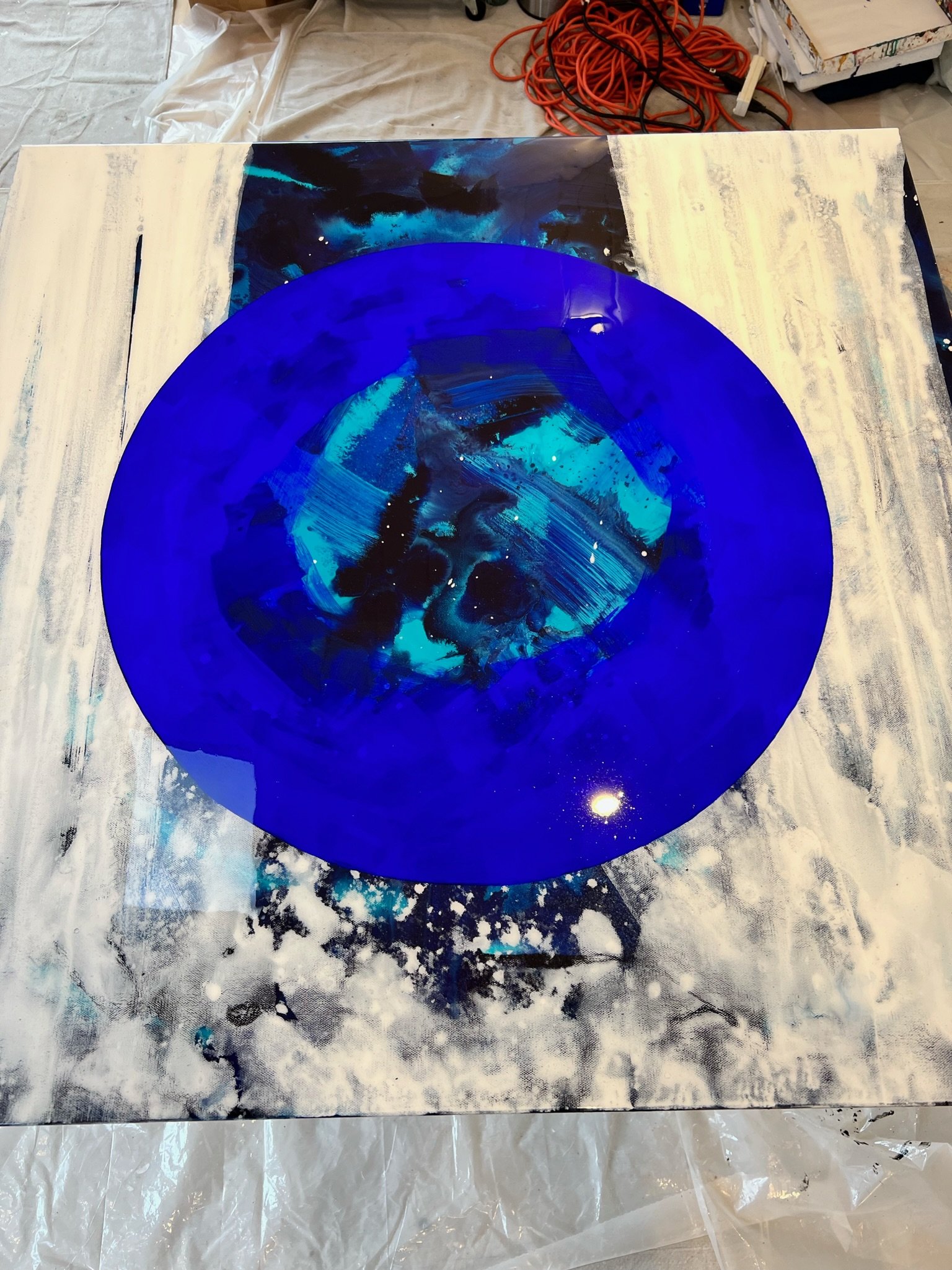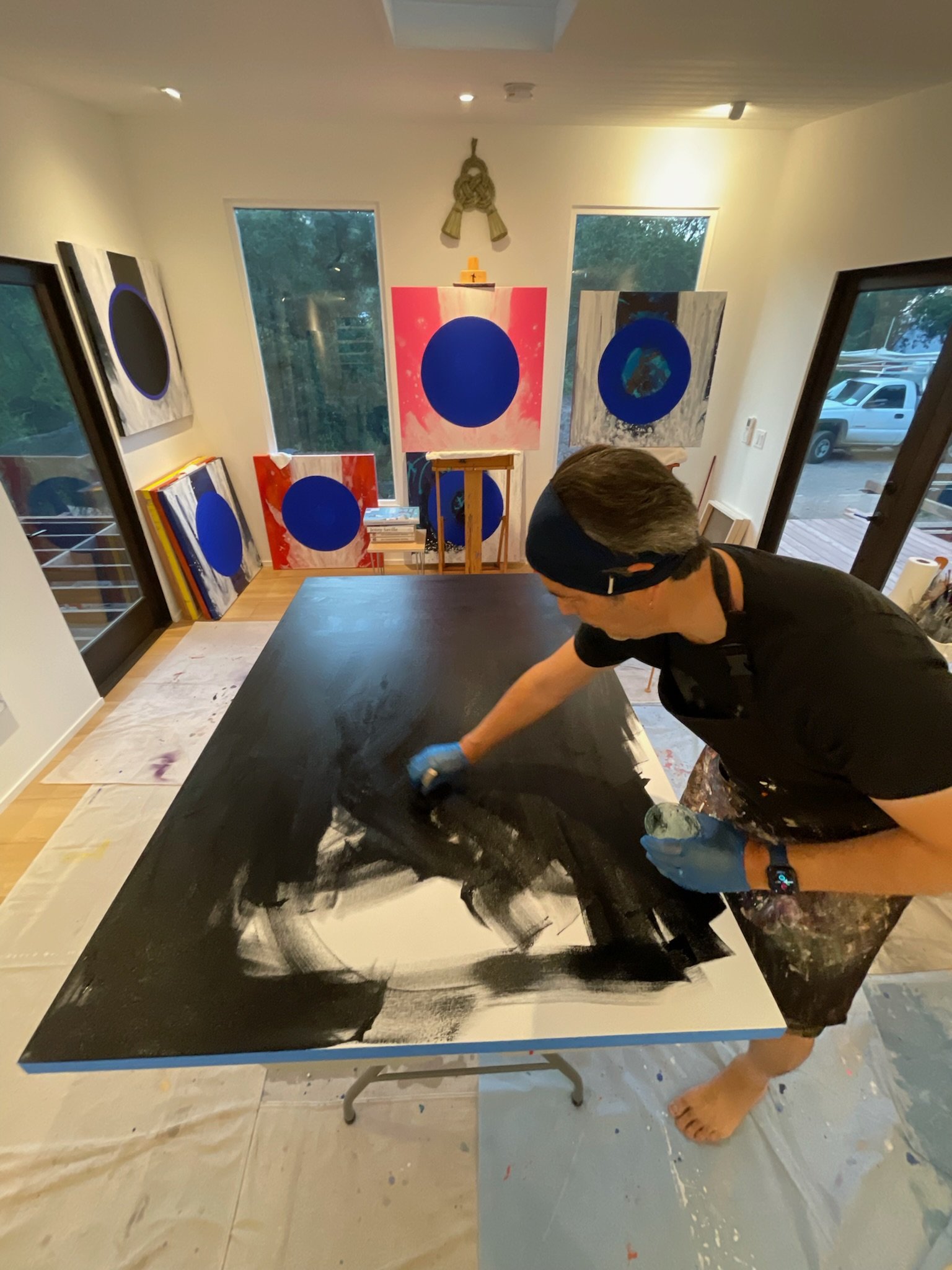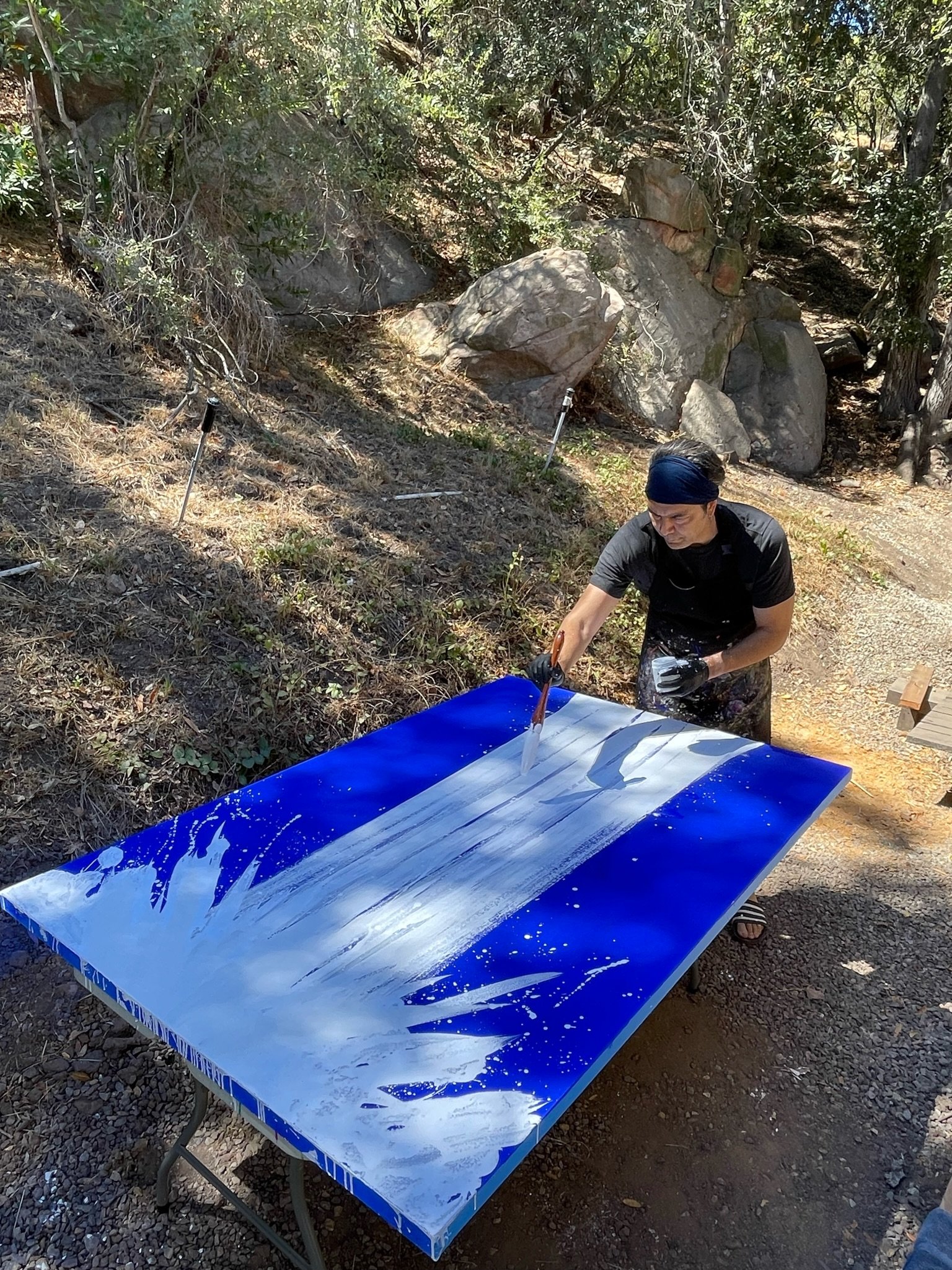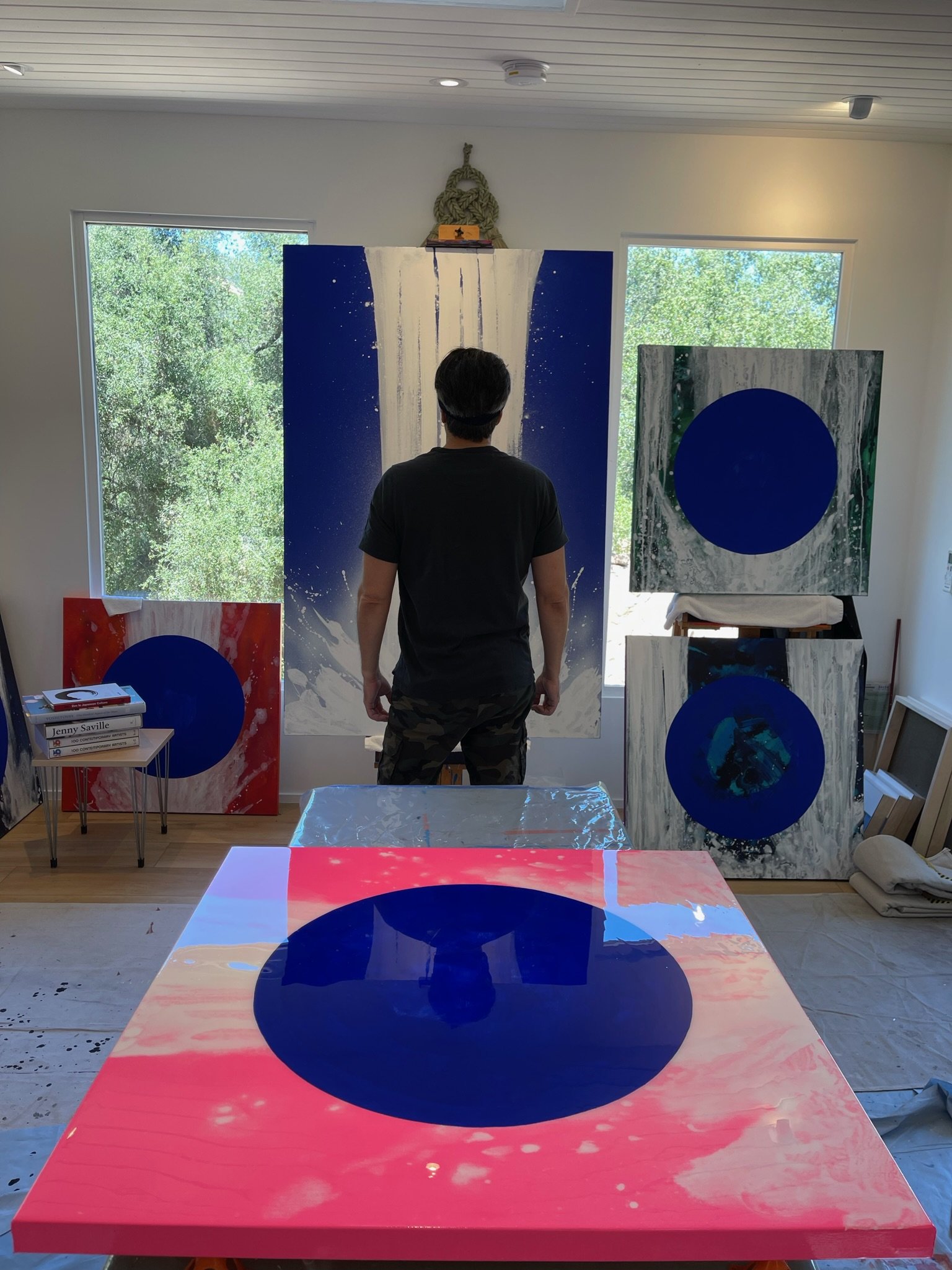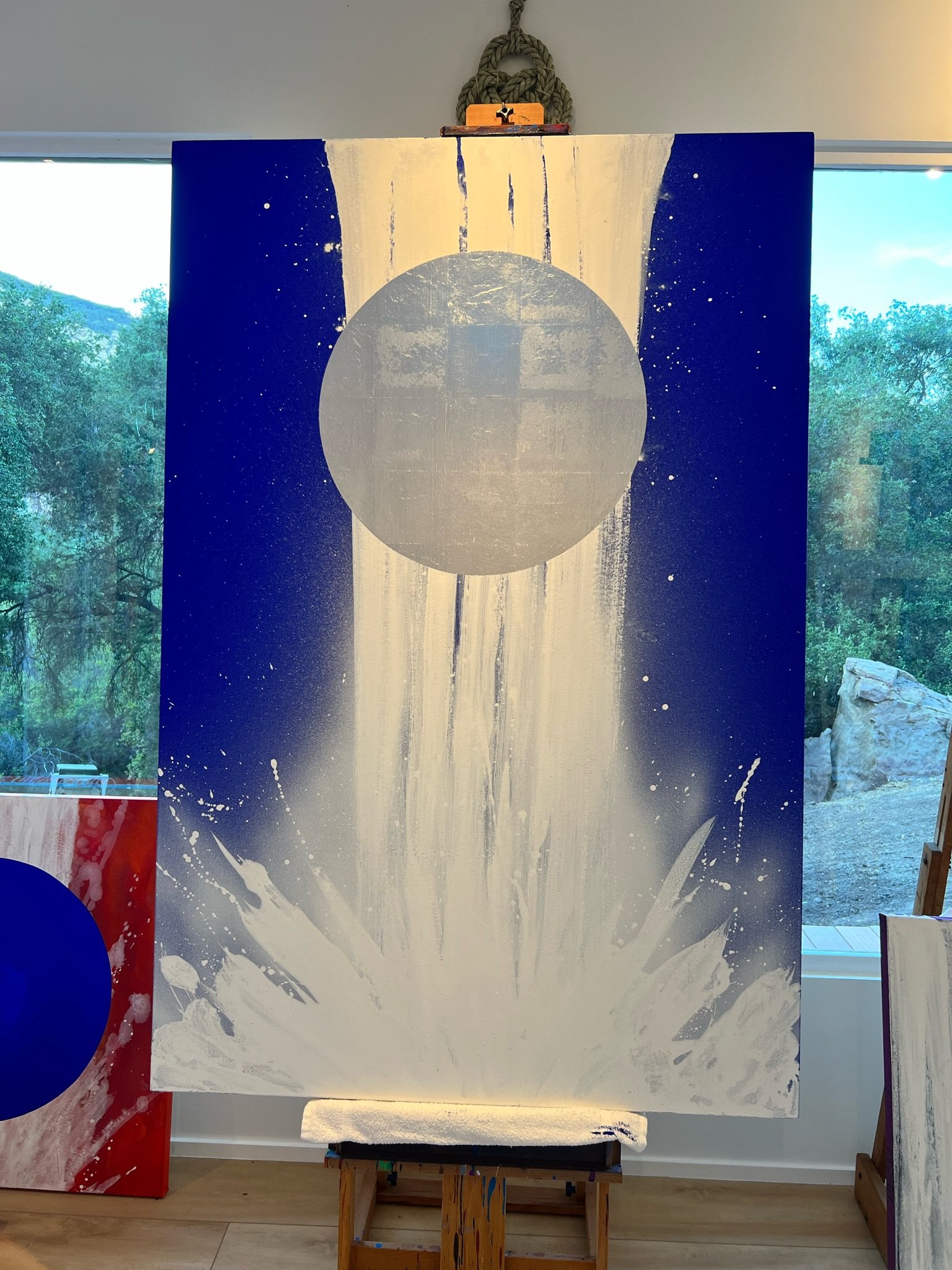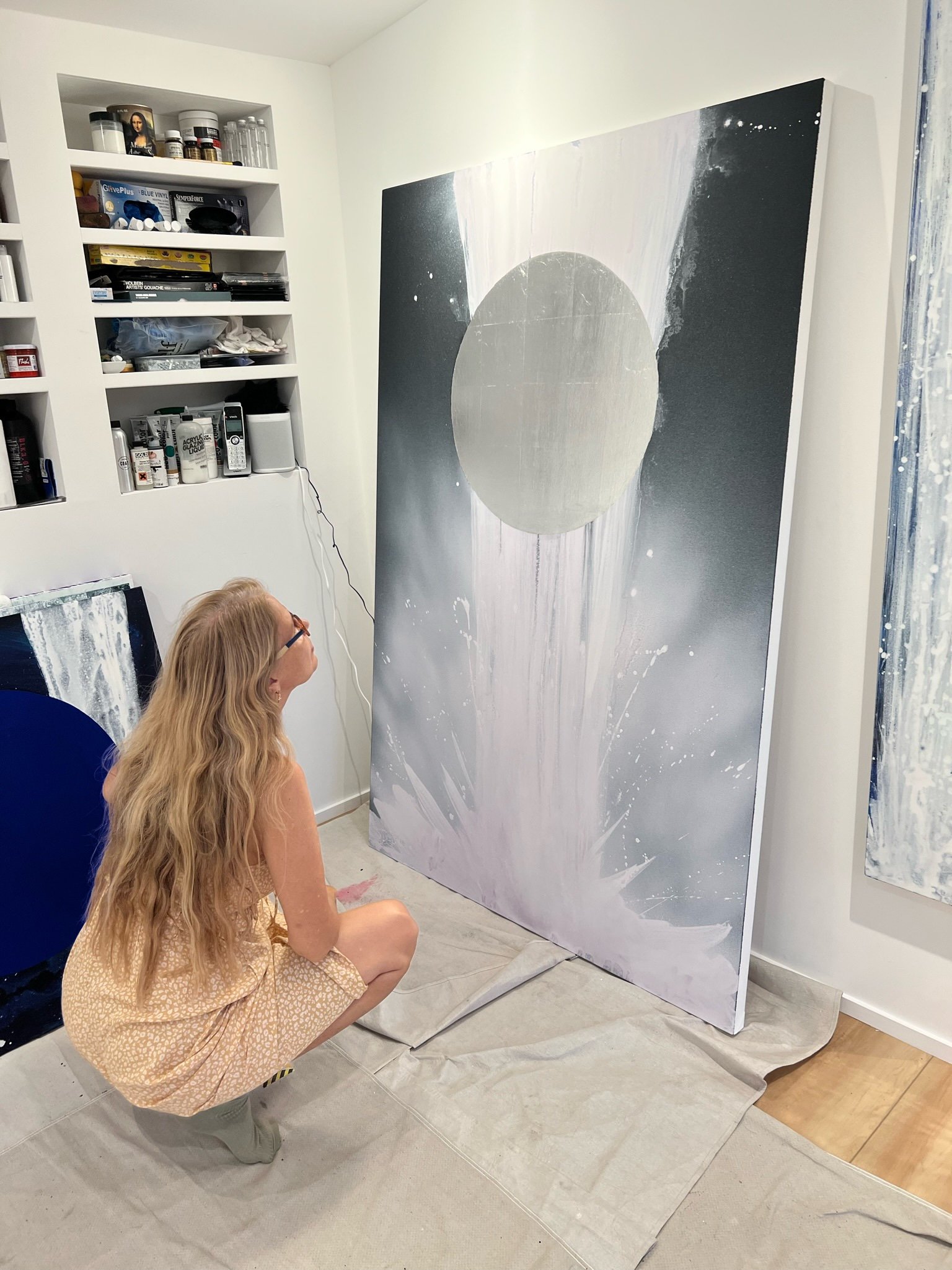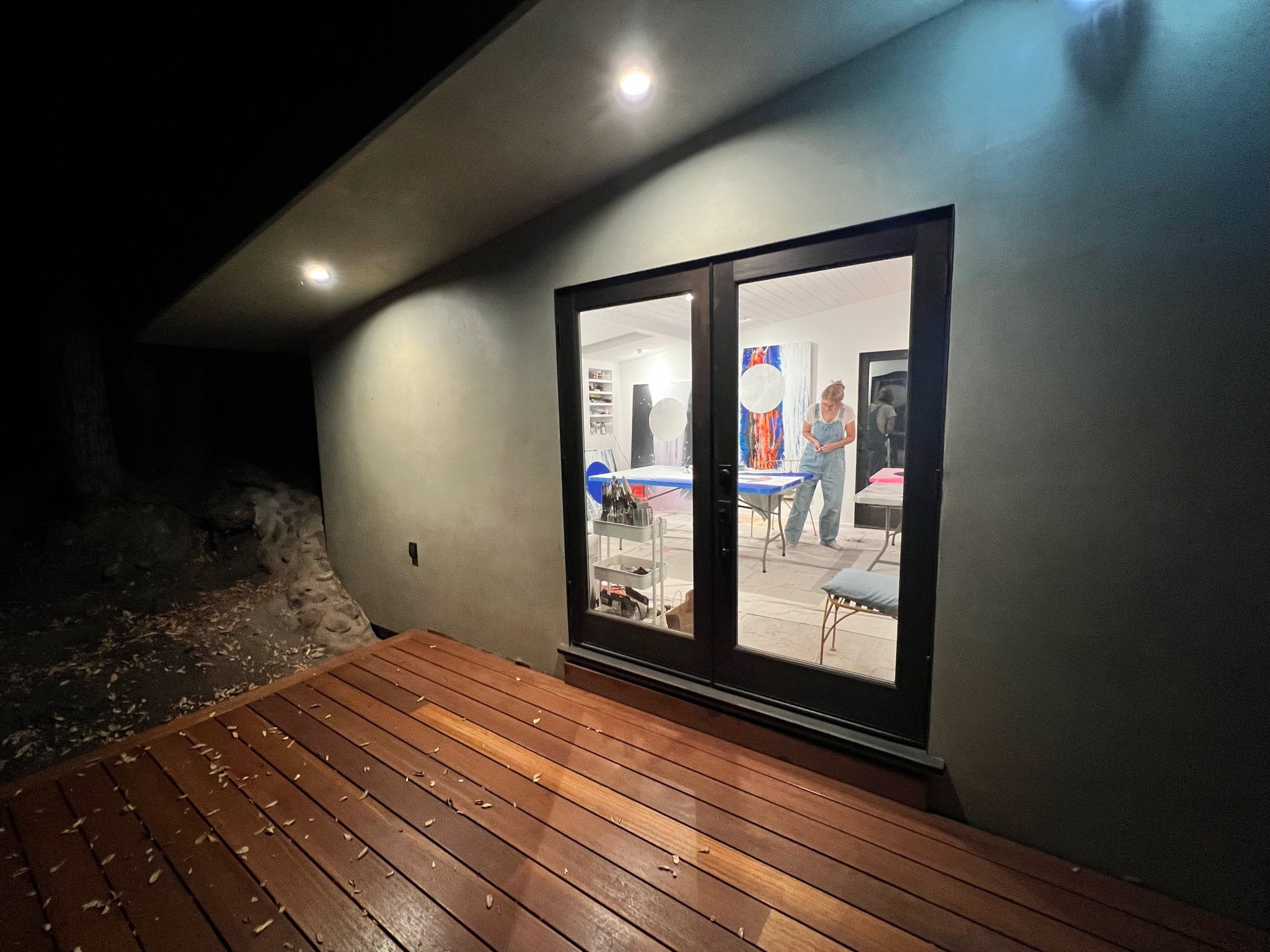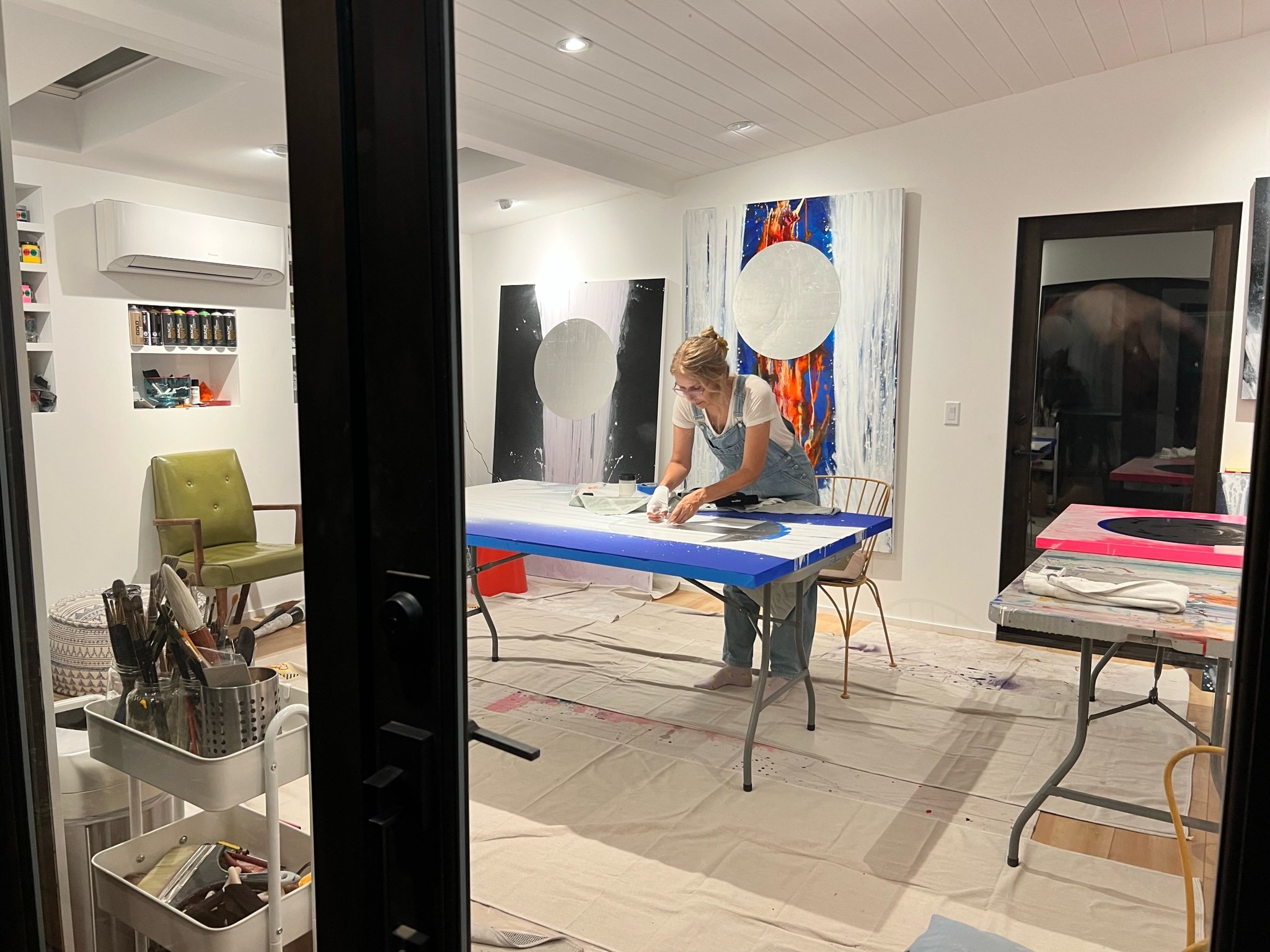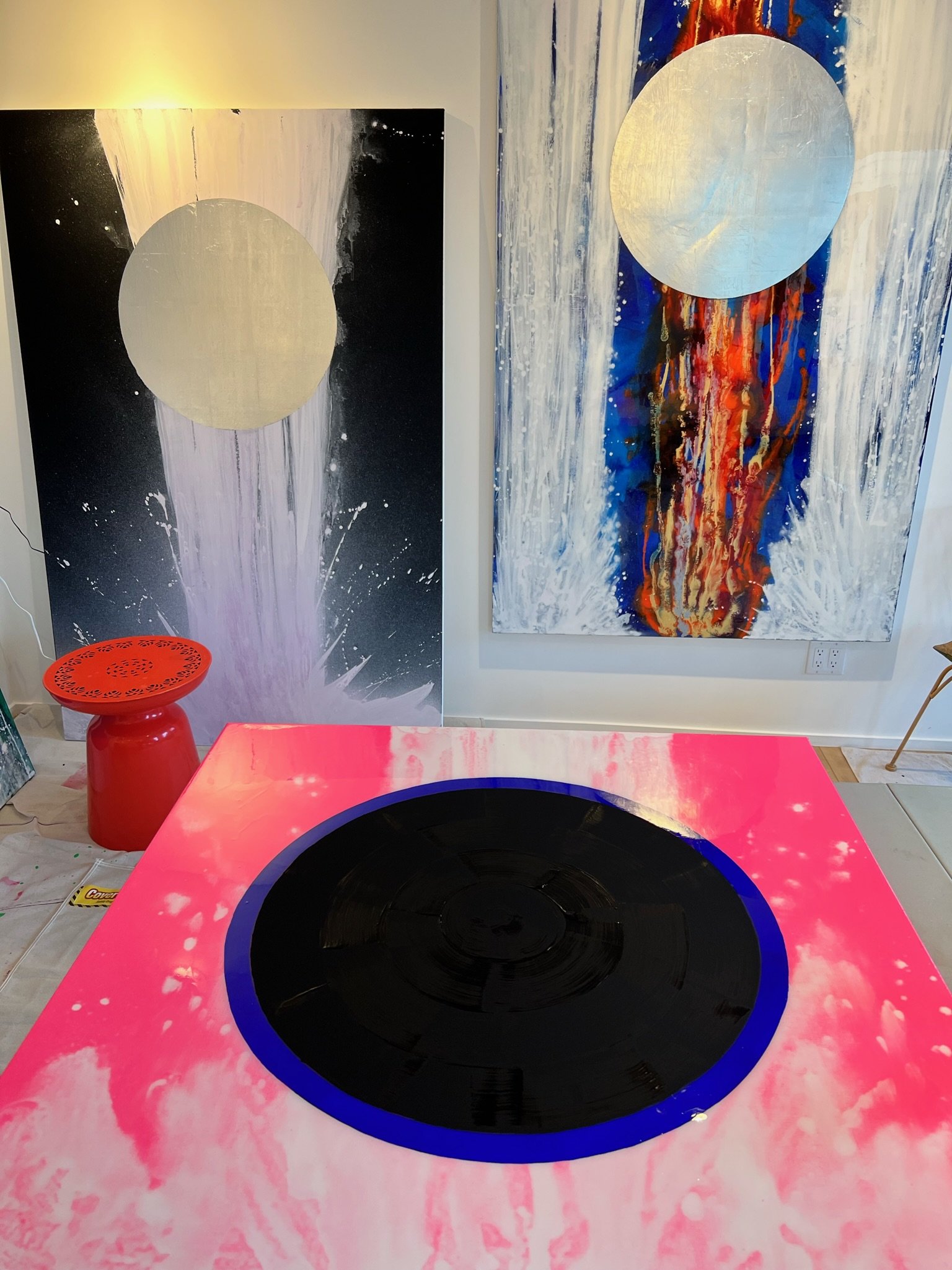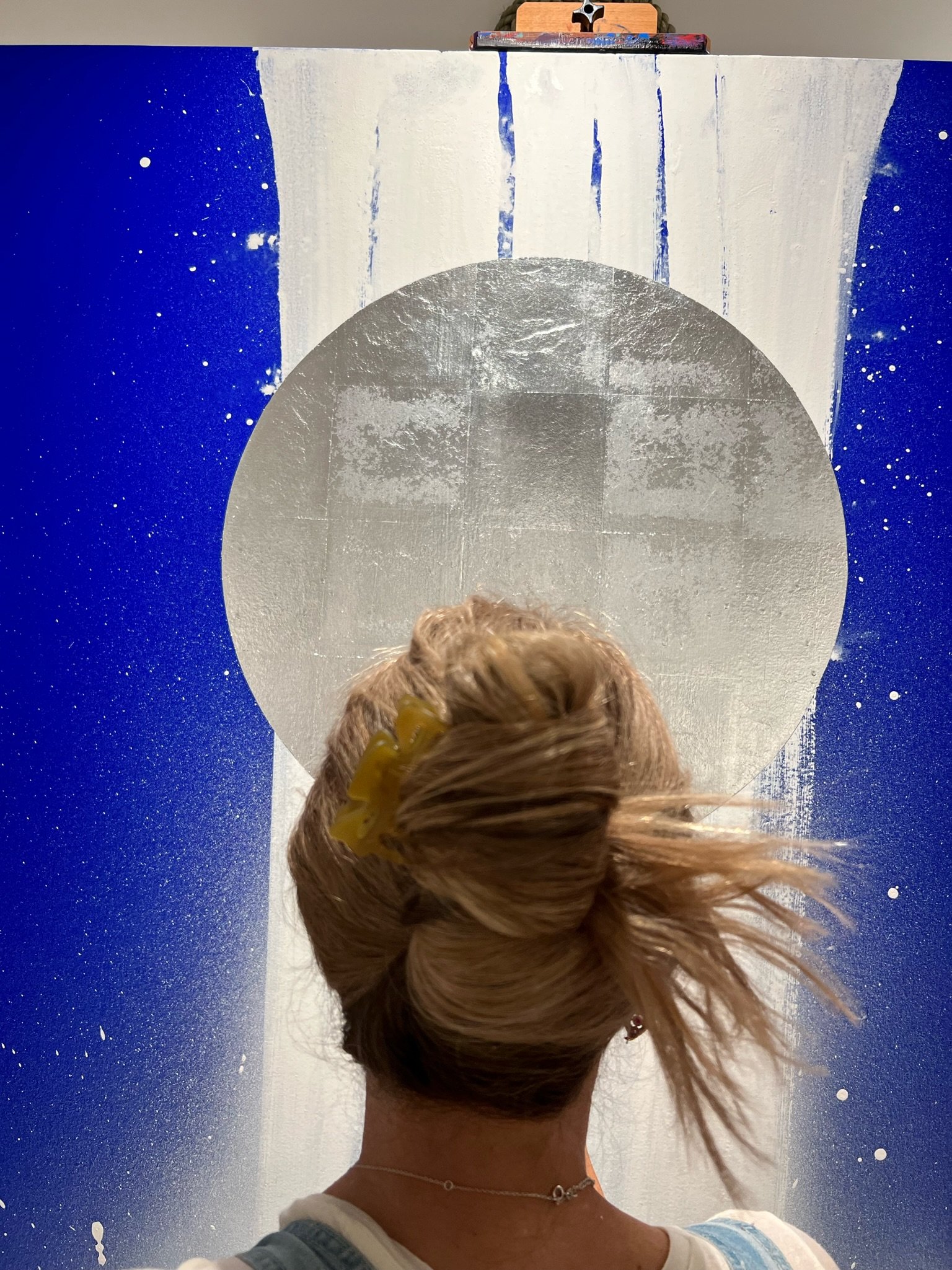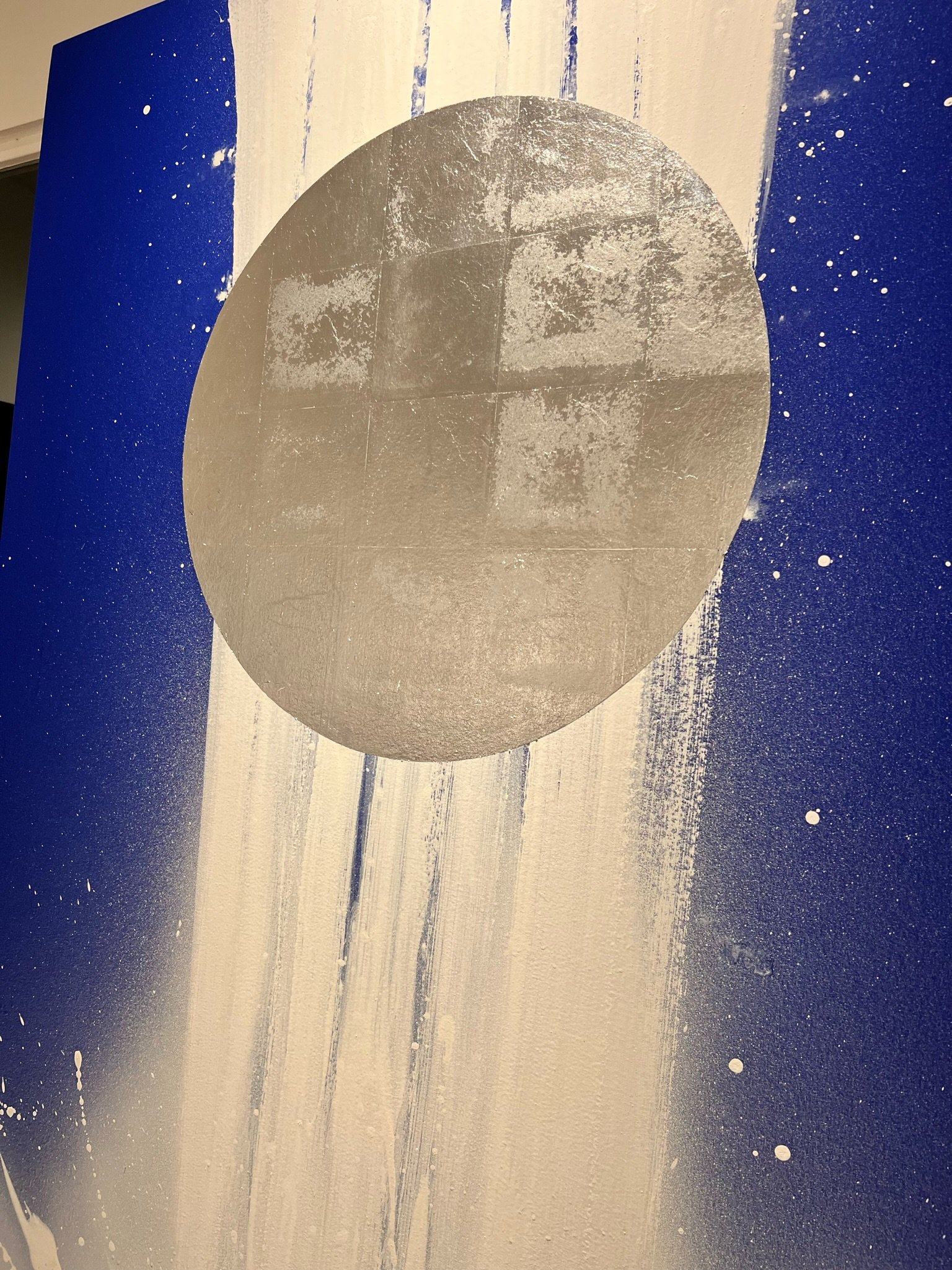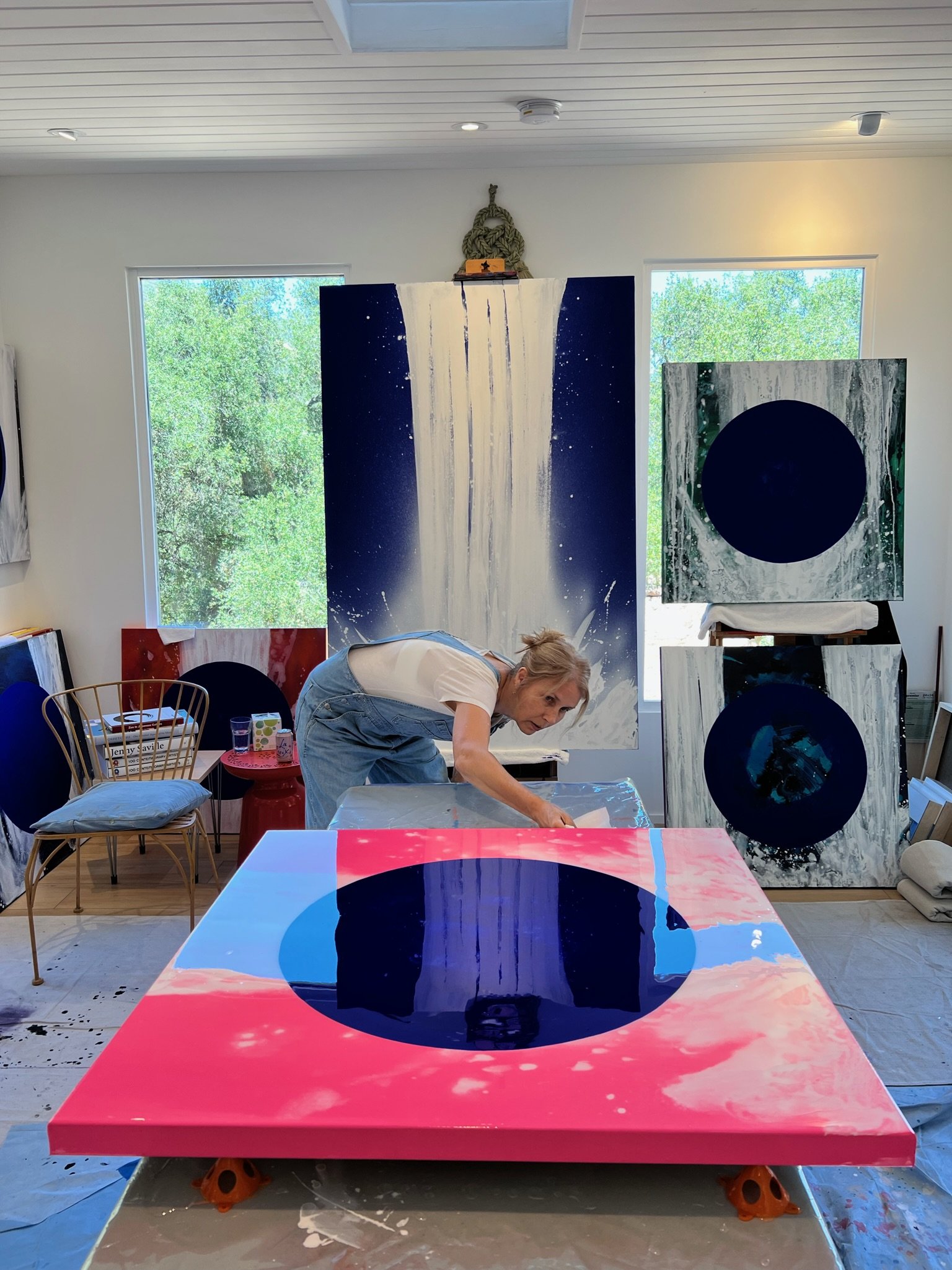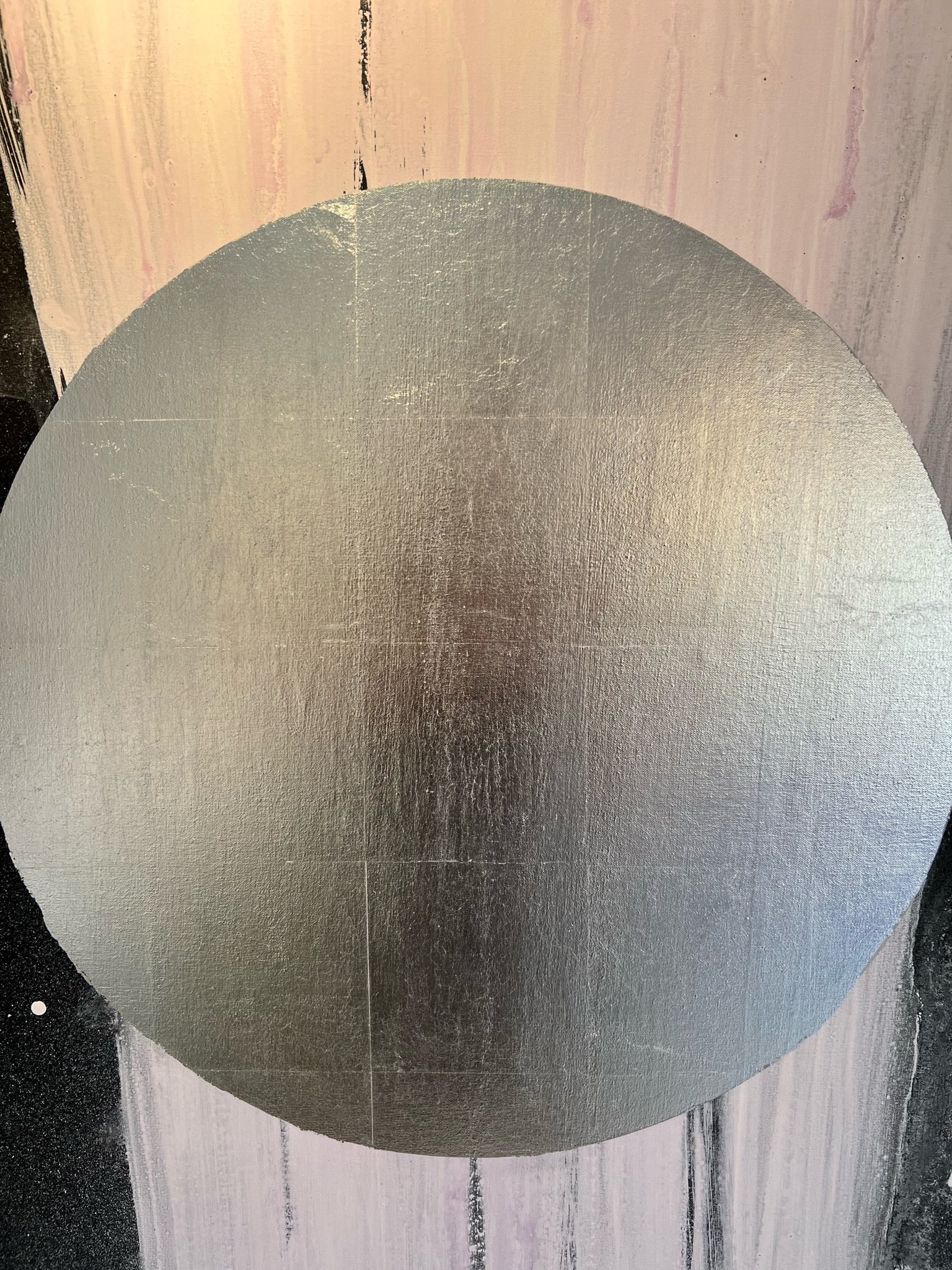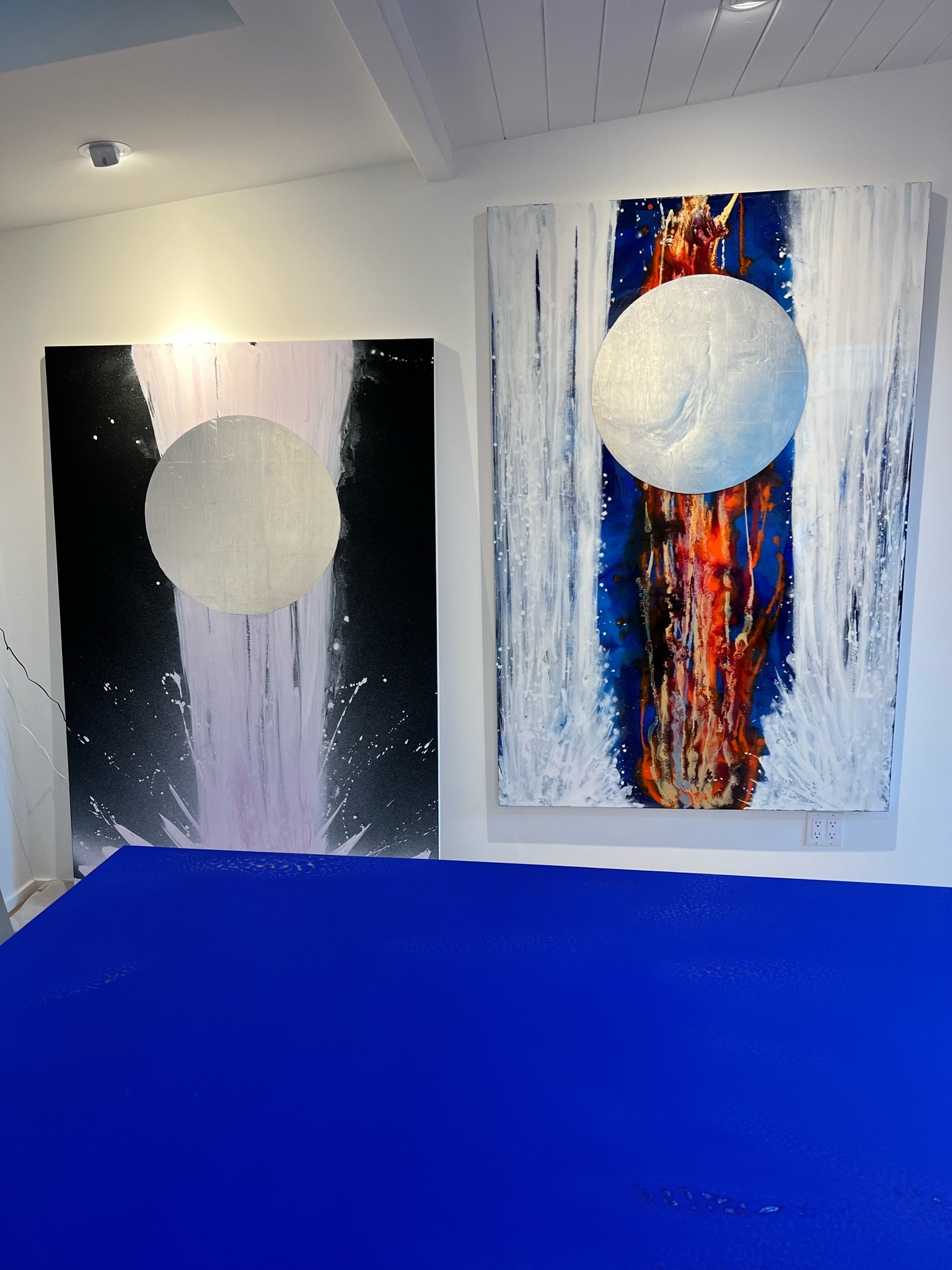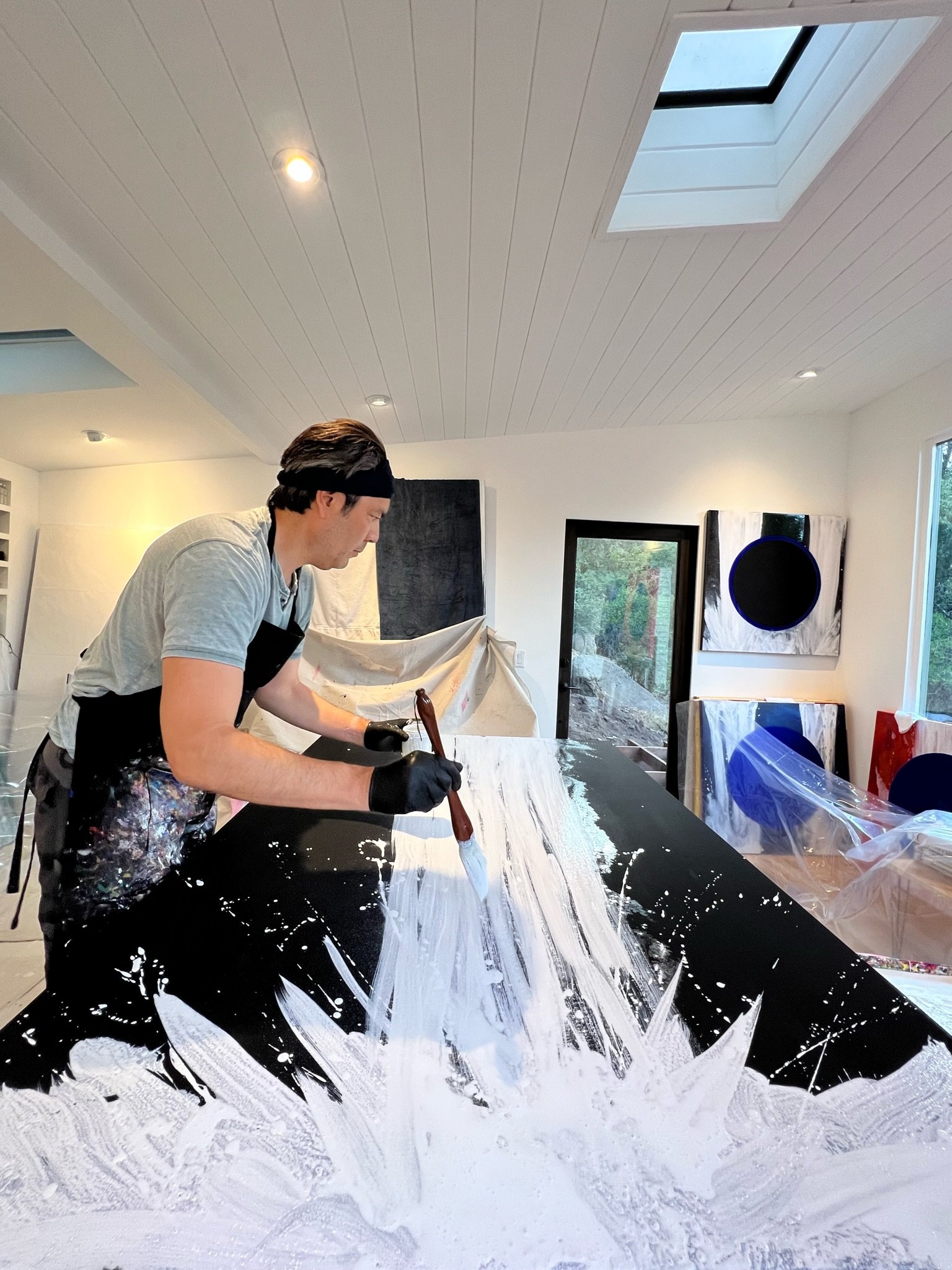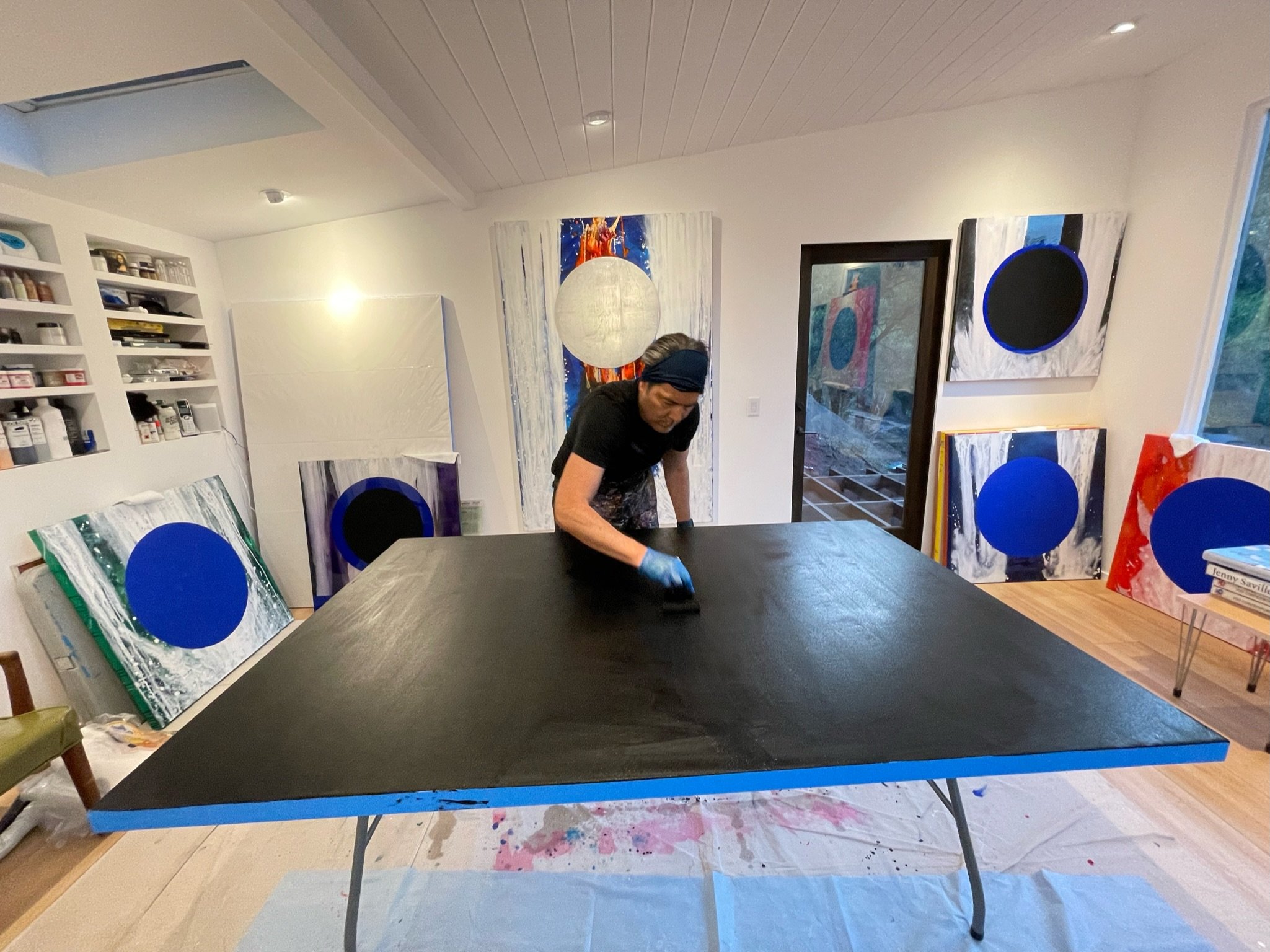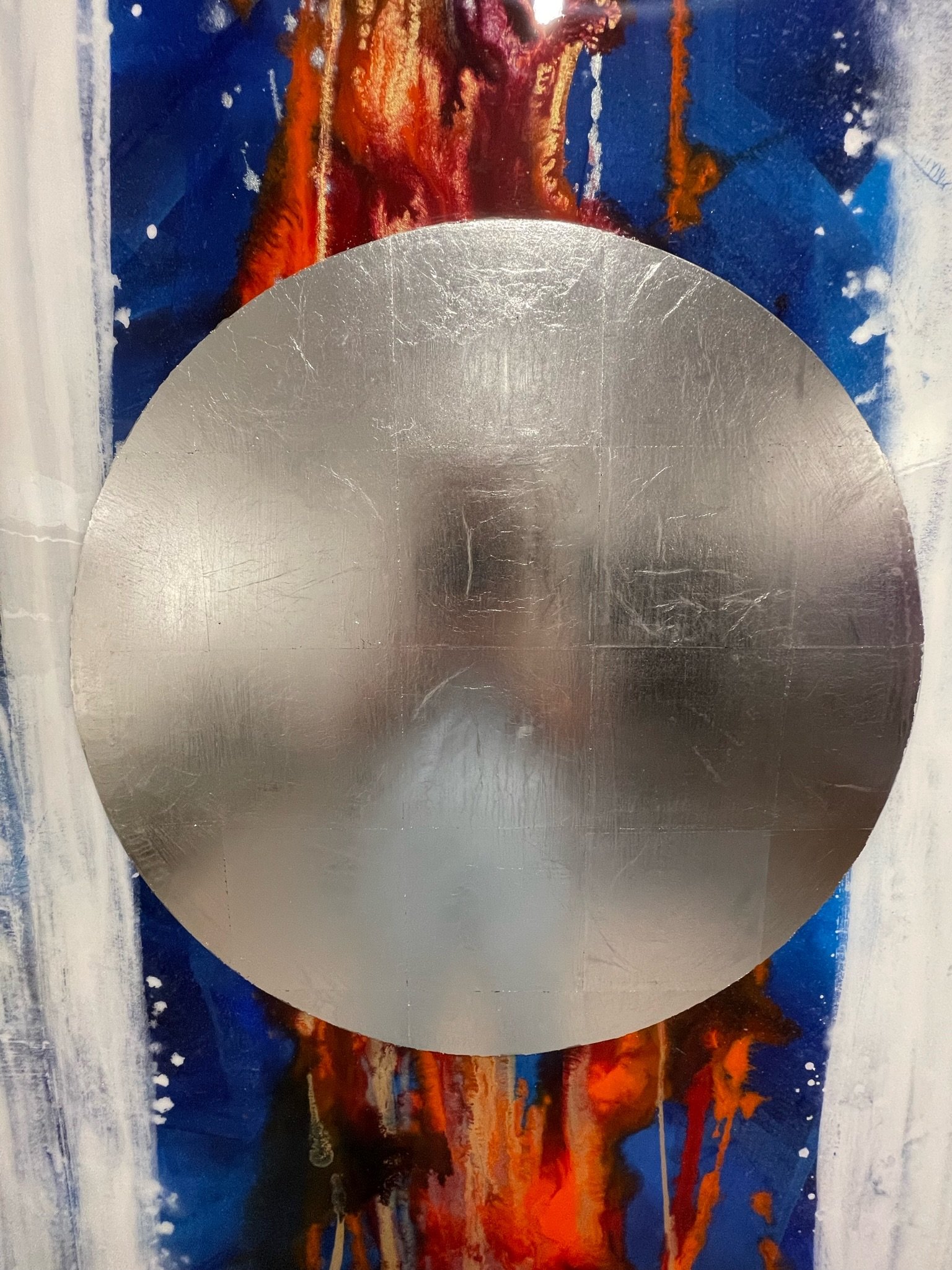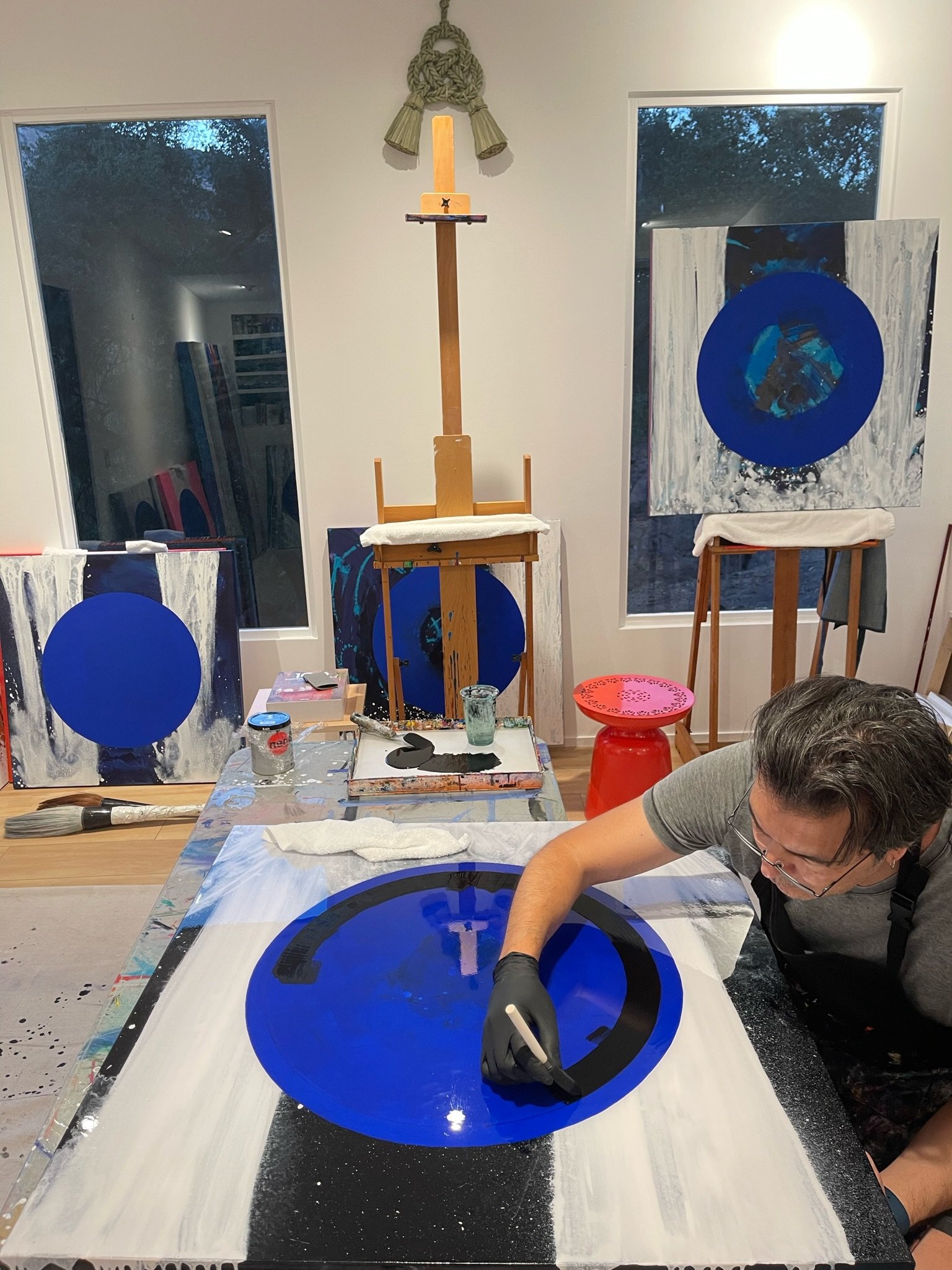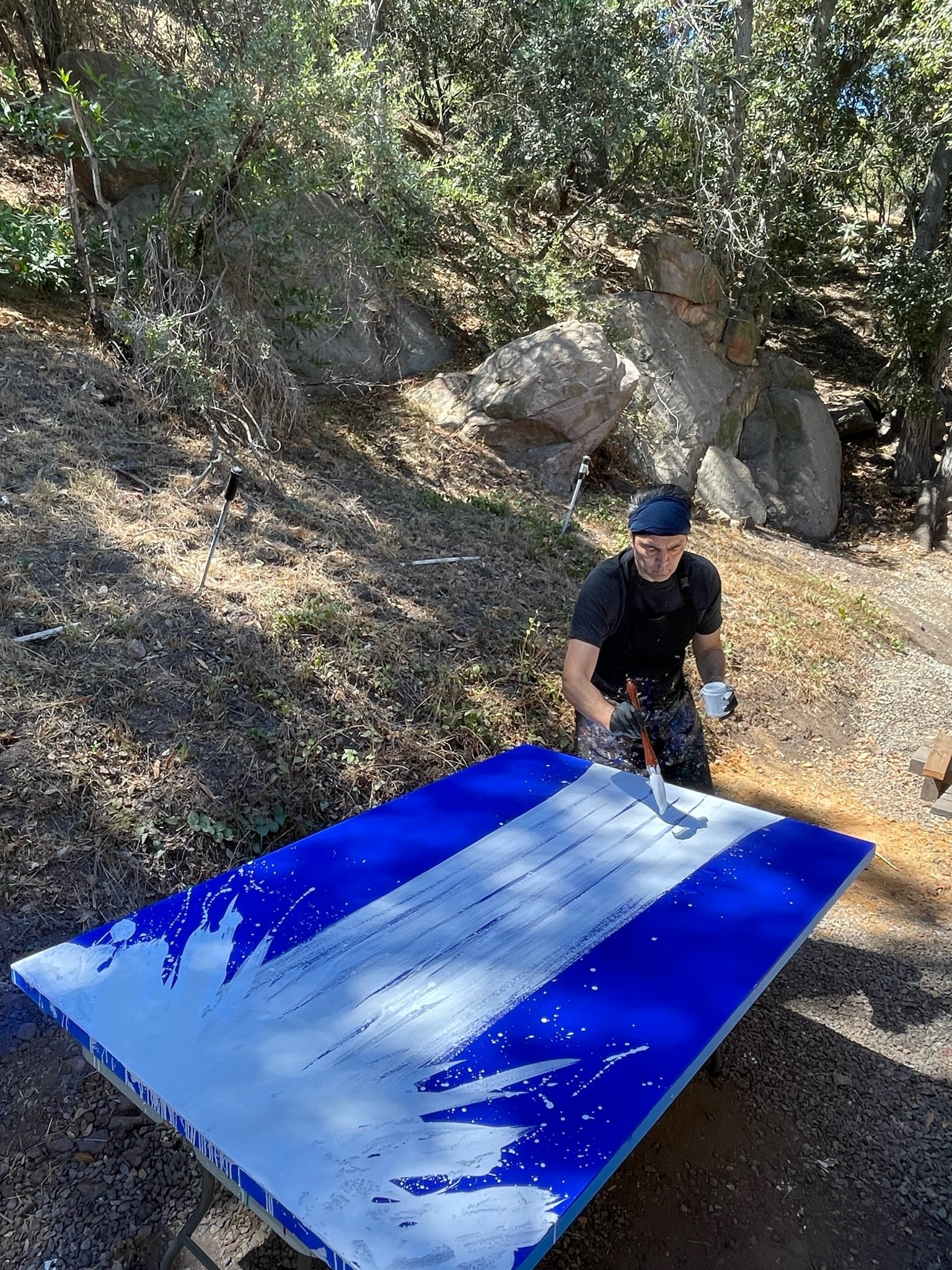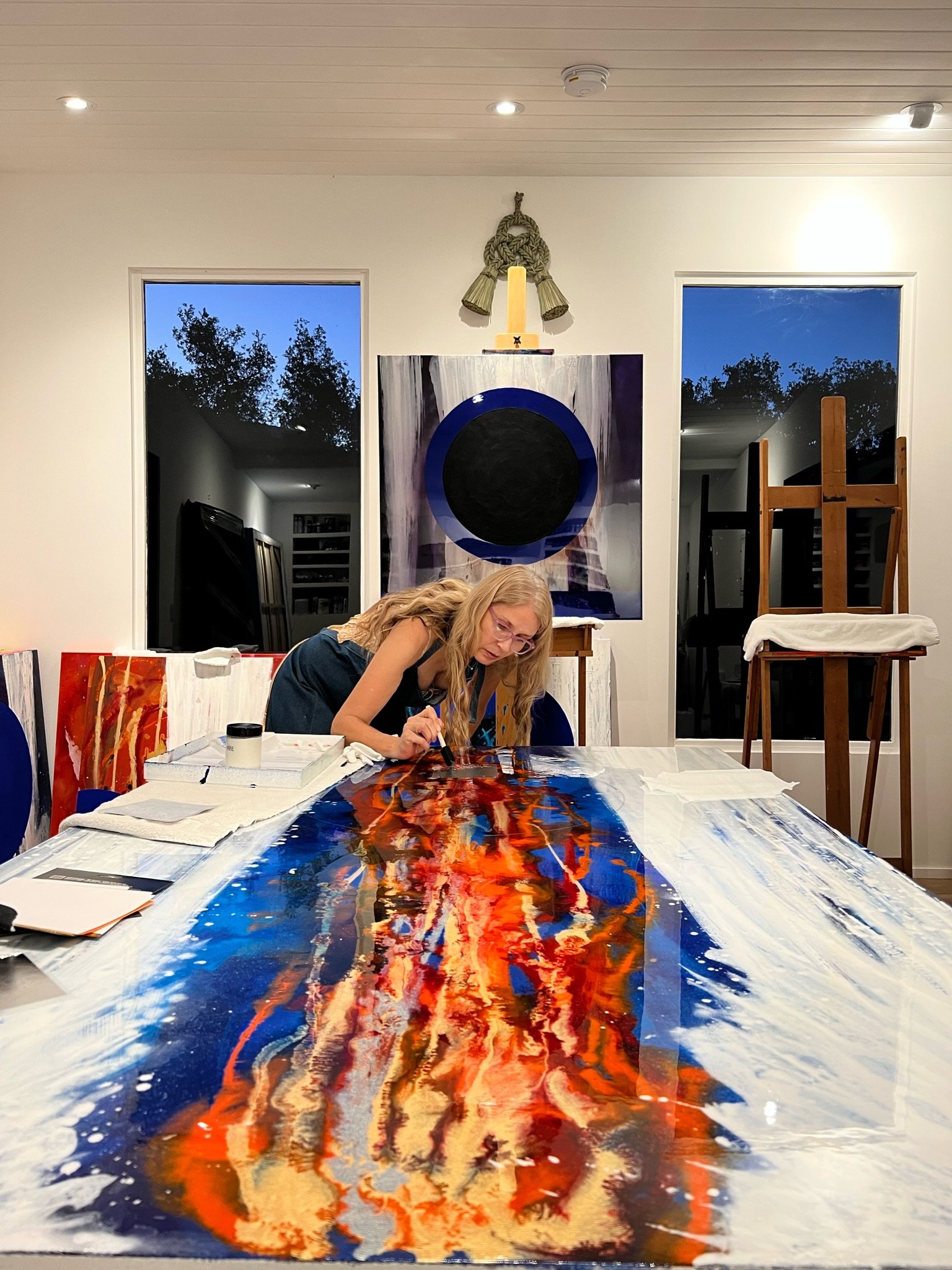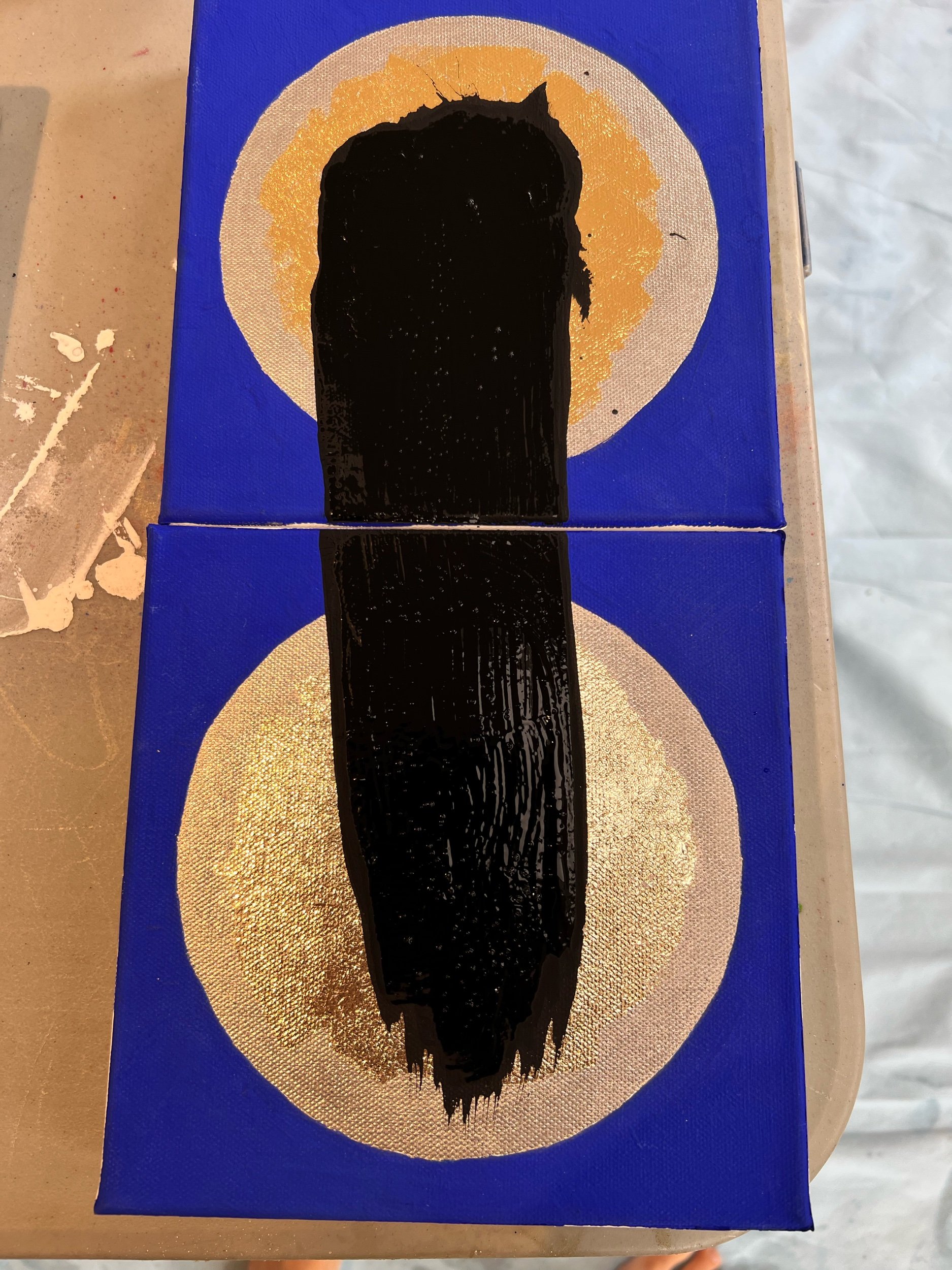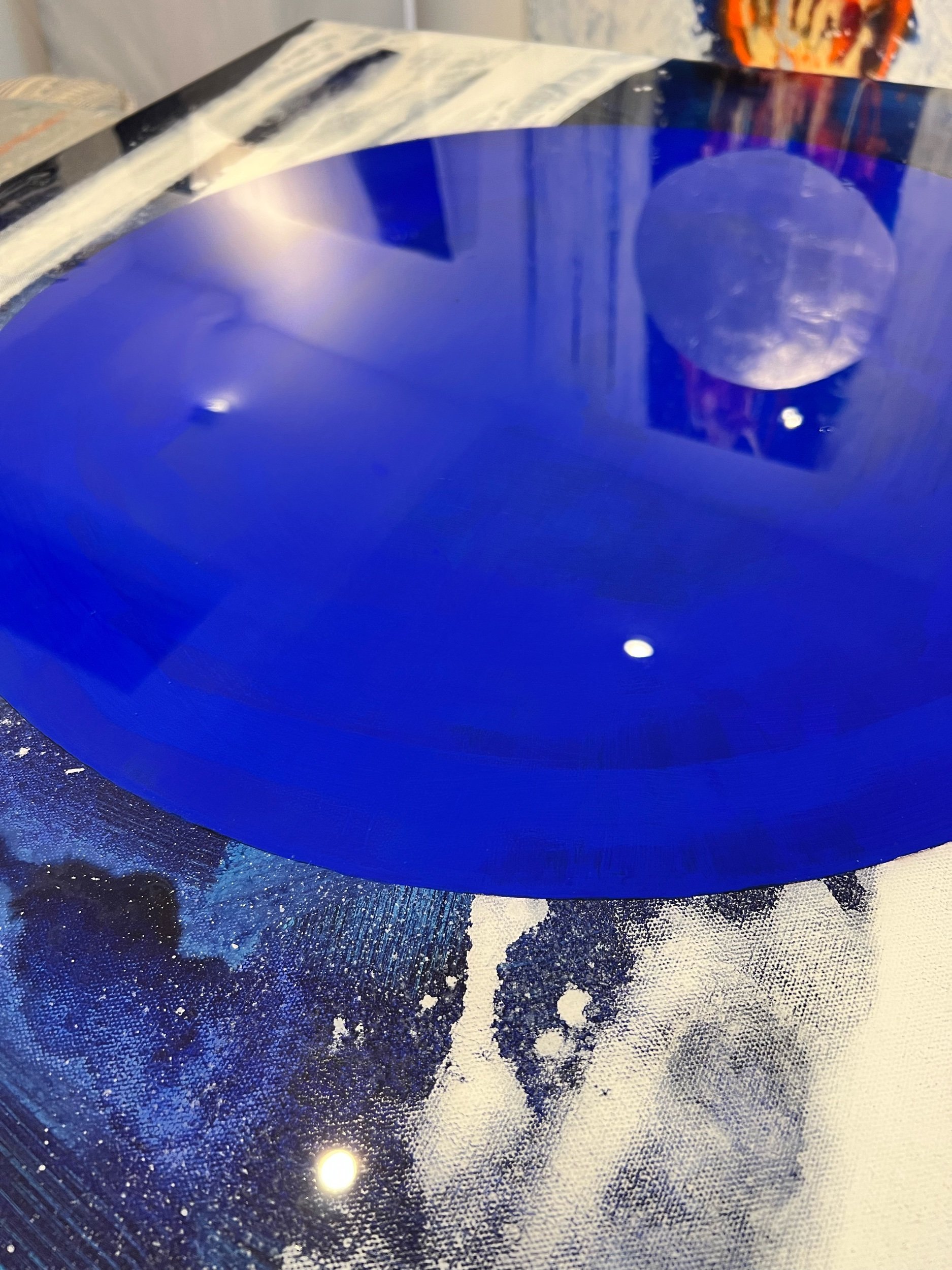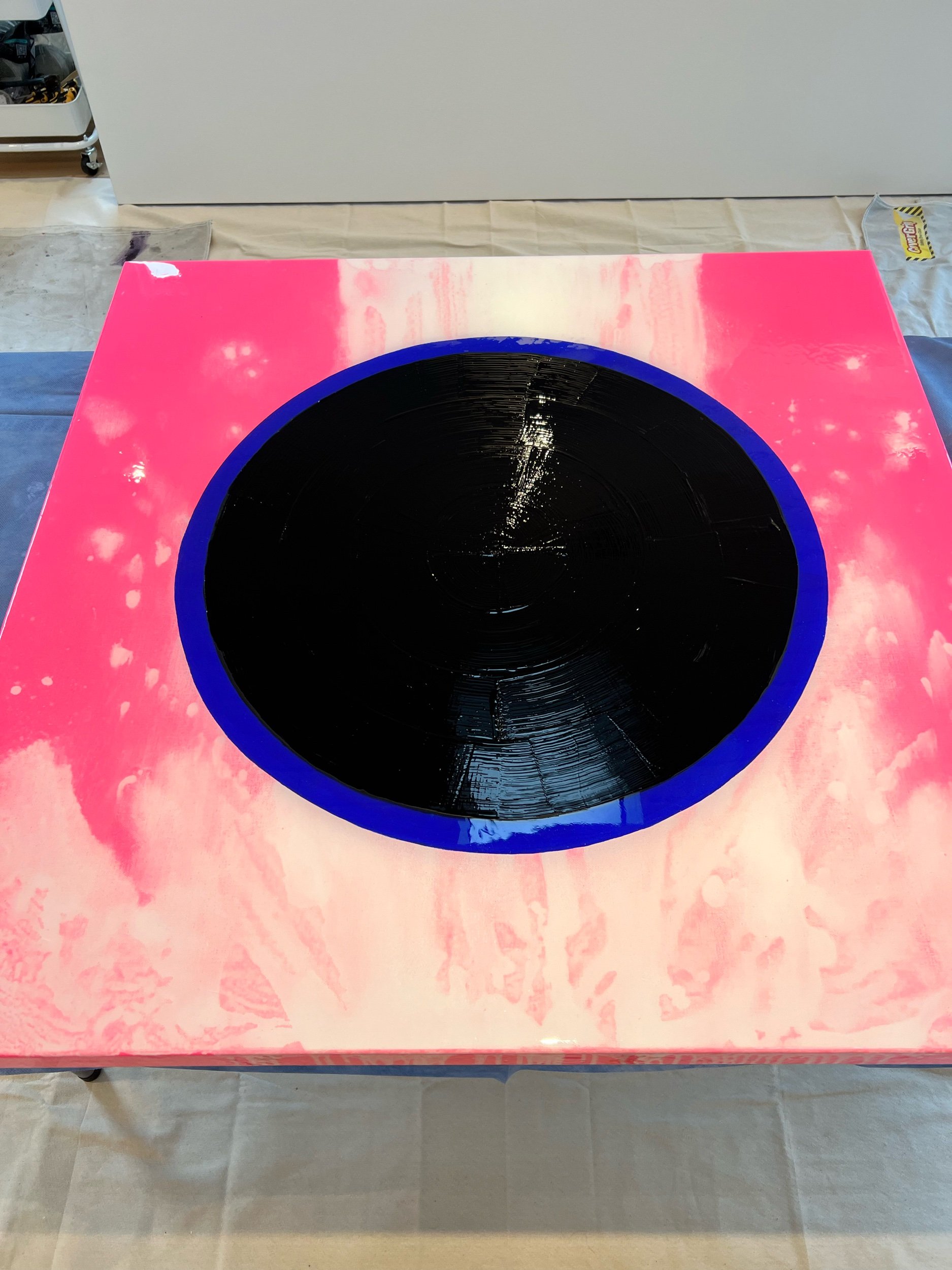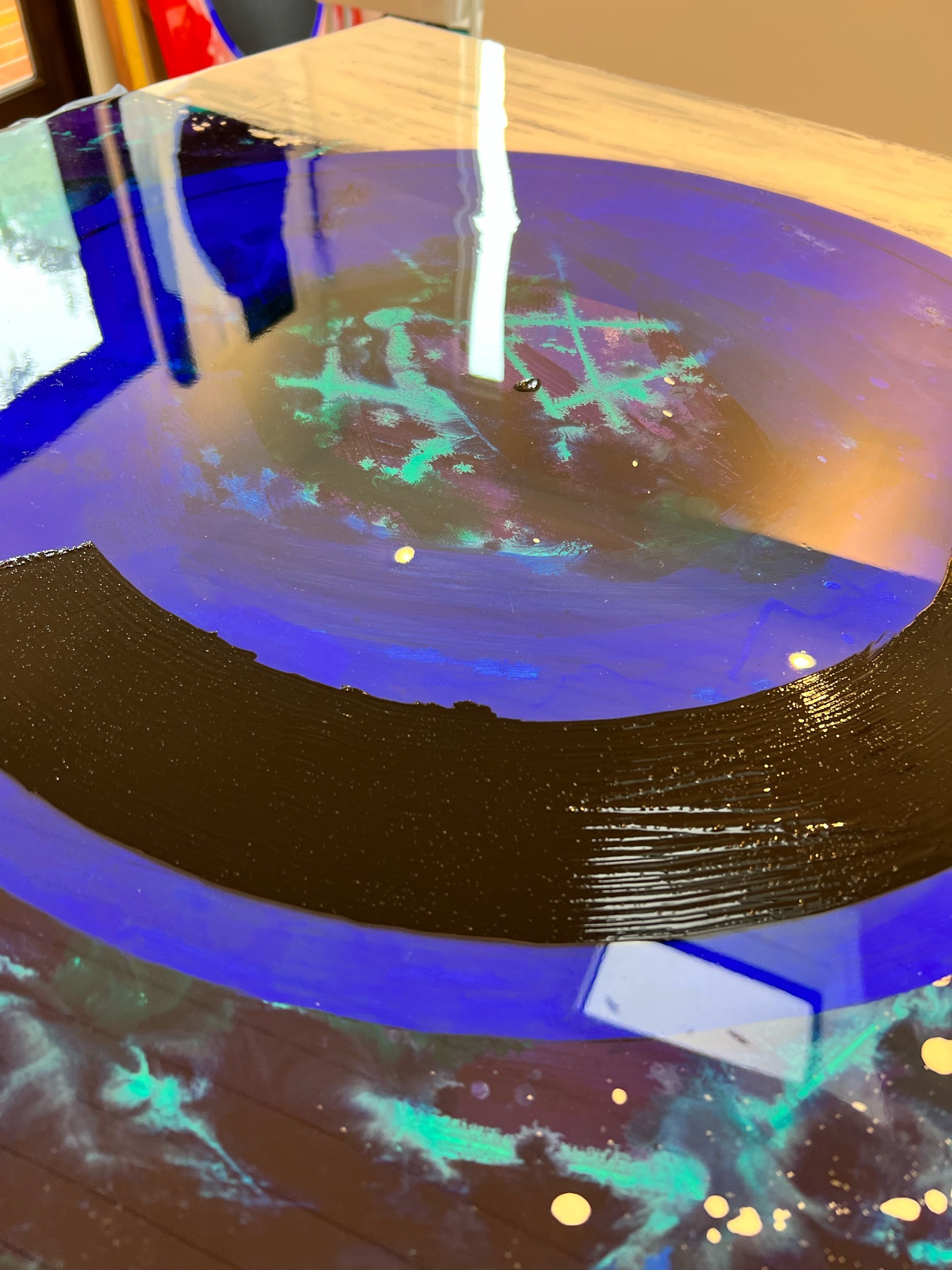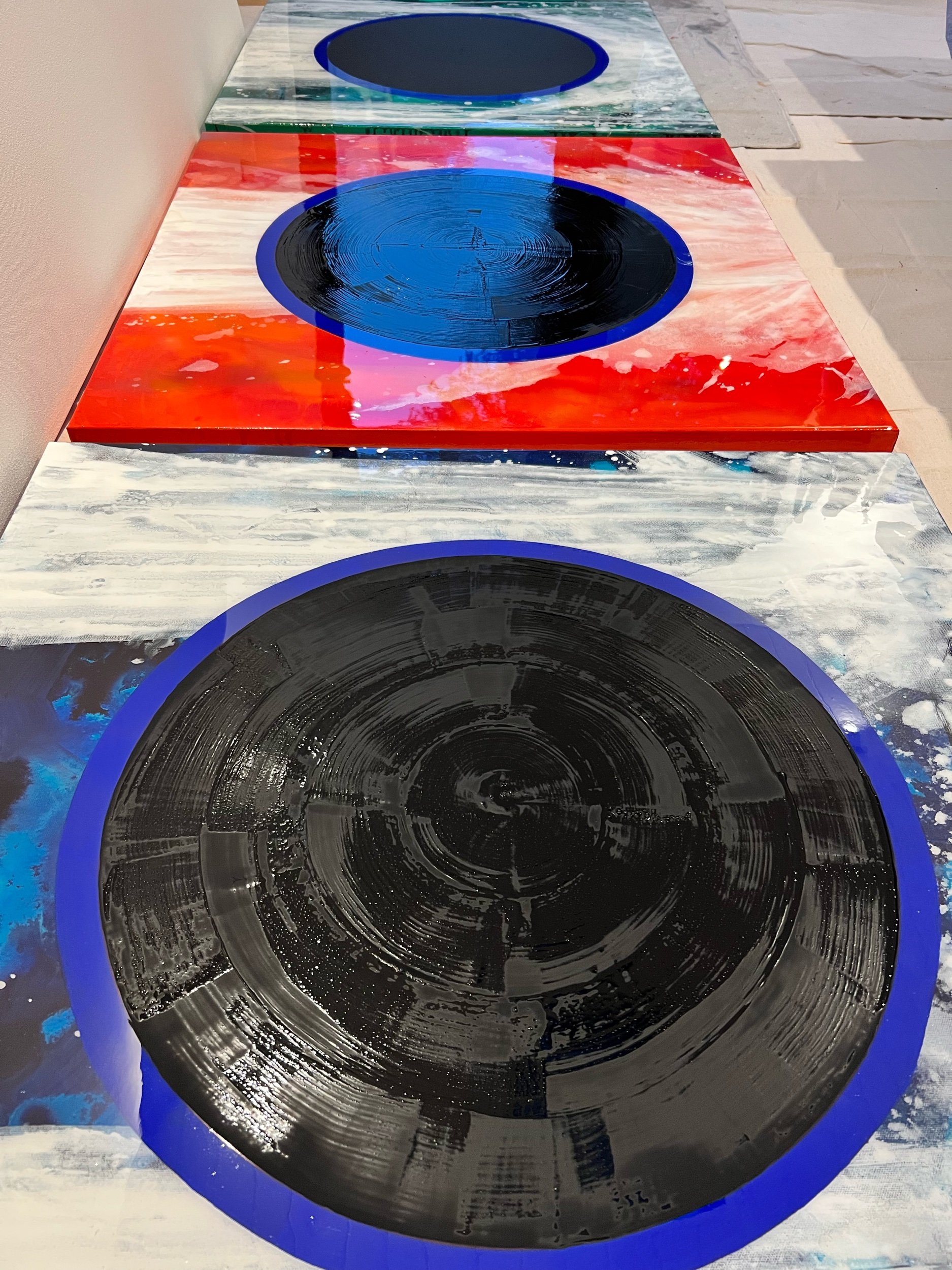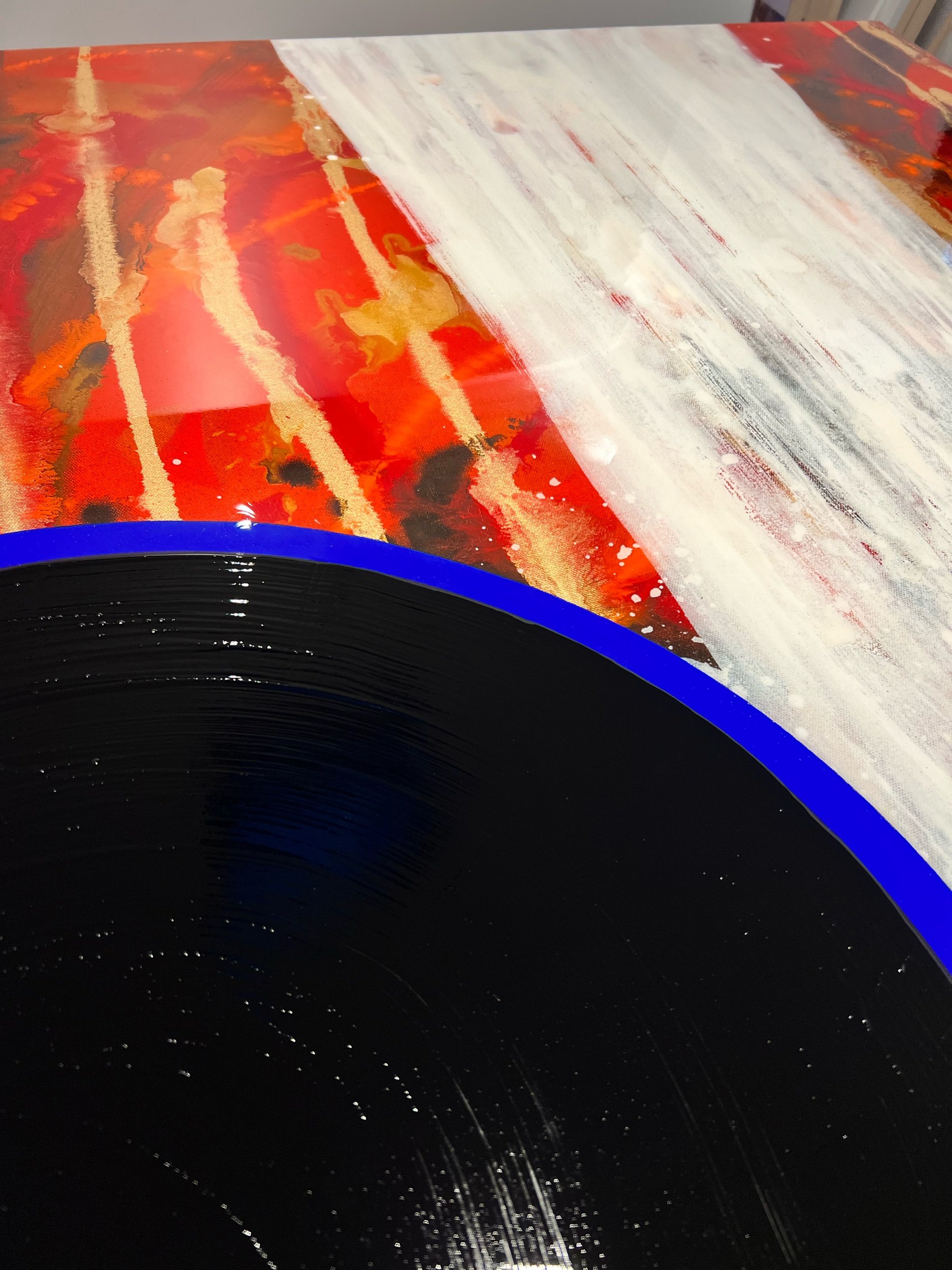The kanji characters for Mushin consist of Mu (nothingness) and Shin (hear, mind, spirit). Or “no mind.” This term is derived from Zen and the martial arts and describes a state when a person’s mind is free from thoughts of anger, fear or ego during combat or daily life. In the West this is akin to the “flow state” that is required for optimal performance and natural concentration. This is the state I strove for while creating these paintings.
While working on this series, I was studying and meditating on The Heart Sutra, a Buddhist sutra that states "Form is emptiness (śūnyatā), emptiness is form." The black circles represent emptiness but they also have a strong physical presence, superimposed against a flowing background that can be seen as waterfalls or simply the cascade of paint in its entropic state. They are also a study in opposites: matte black against a lustrous color field. Yin and Yang.
The metal-leafed circles on the vertical canvases serve as foils of natural geometry against the flow of paint; again order contrasted with controlled chaos. The most dynamic of the group is entitled “Zaō Gongen” (蔵王権現) who is the kami (deity) of Shugendo, a syncretic 1300 year old Japanese practice that combines Shinto, Taoism and Zen. The blue painting is entitled “Kannon” (観音) after the Bodhisattva of compassion, mentioned in The Heart Sutra. The black painting is called “Yūrei” (幽霊) or Ghost.
I finished the series with the largest painting, “Kokoro” (心), which means heart. It’s a synthesis and reconciliation of the emptiness and form of its sister paintings.
The paintings are a unification of Japanese and American influences, combining ancient philosophy with modern, abstract and minimalist compositions. They are not meant to be religious paintings per se but aspire to evoke a meditative sense of the beauty and impermanence of life.
John S. Couch 惠深

